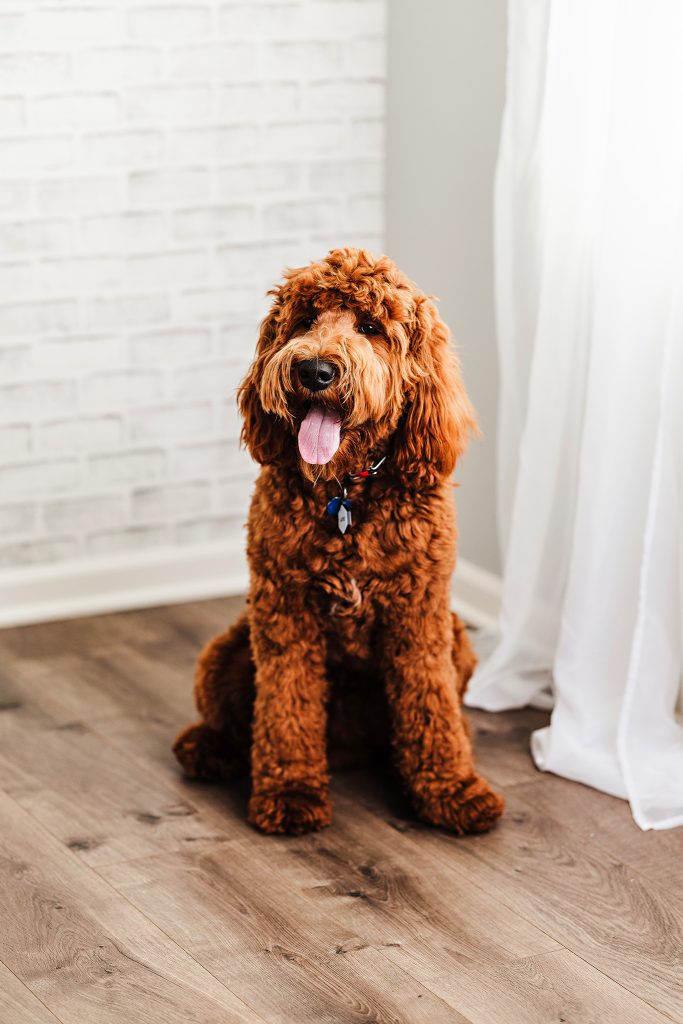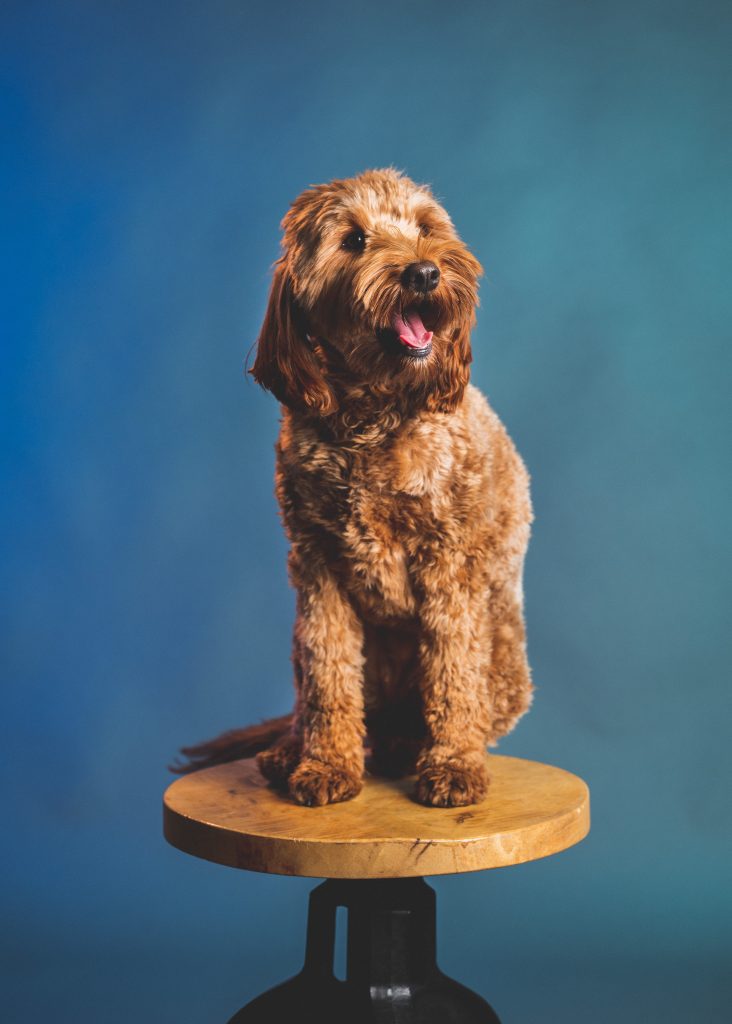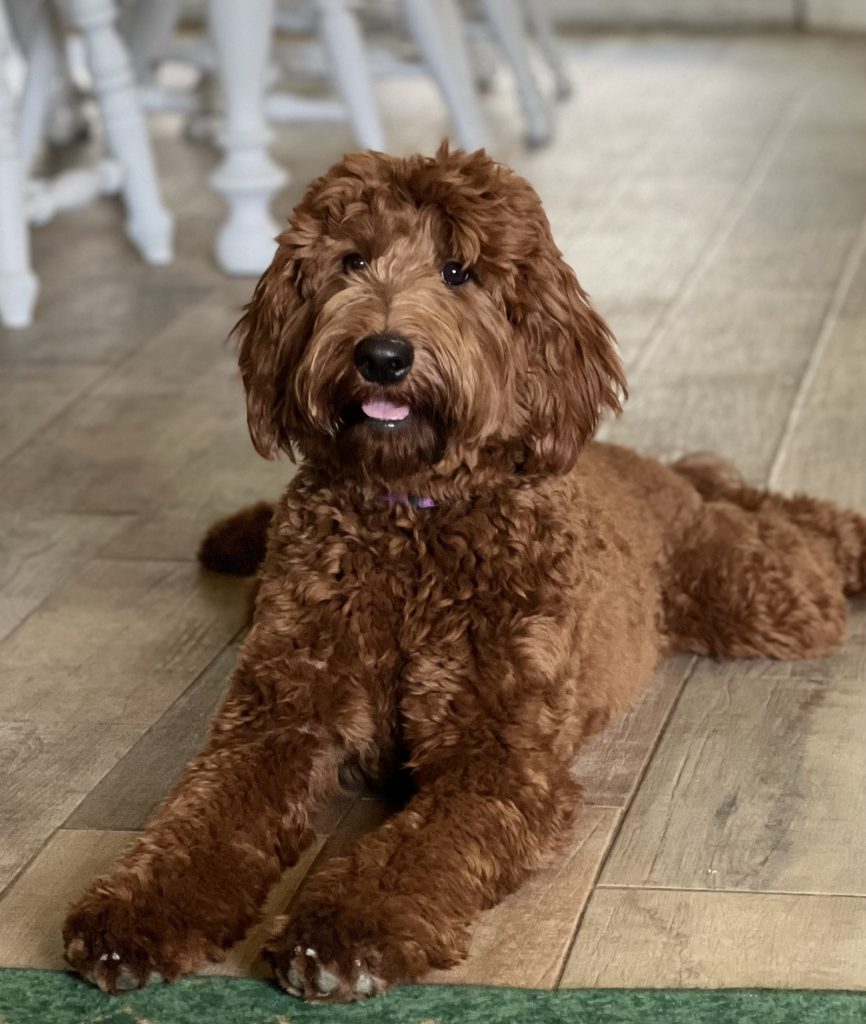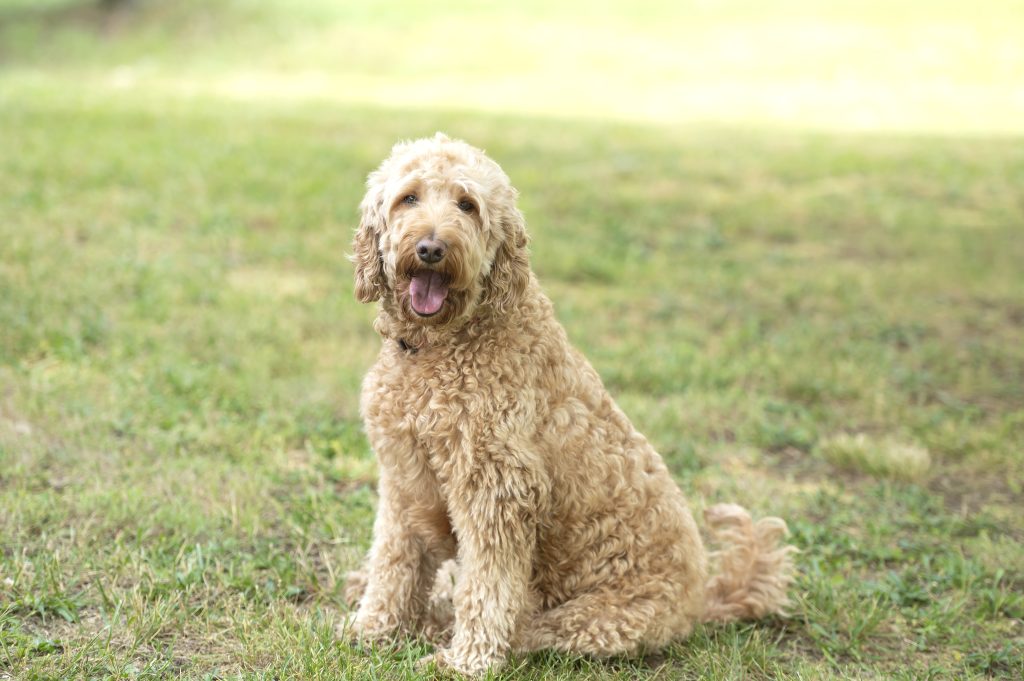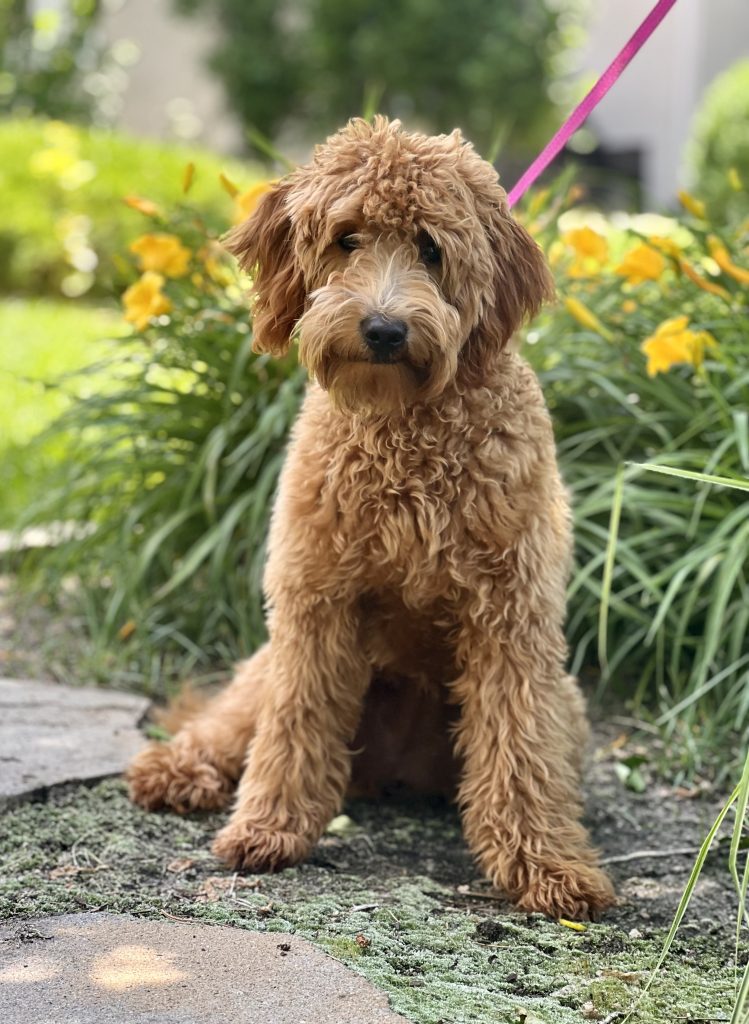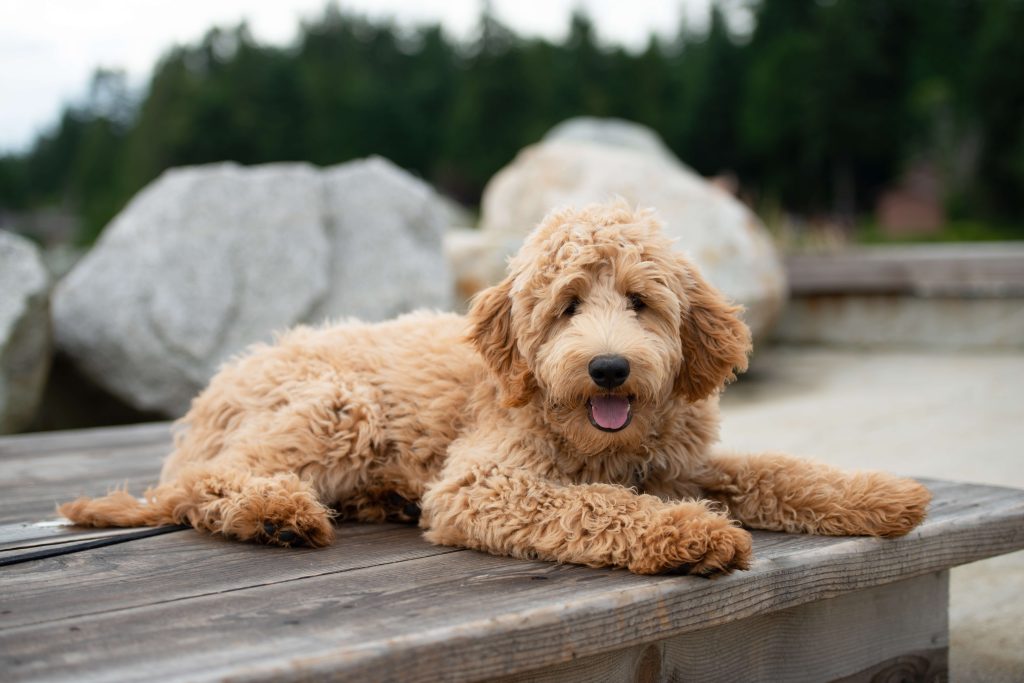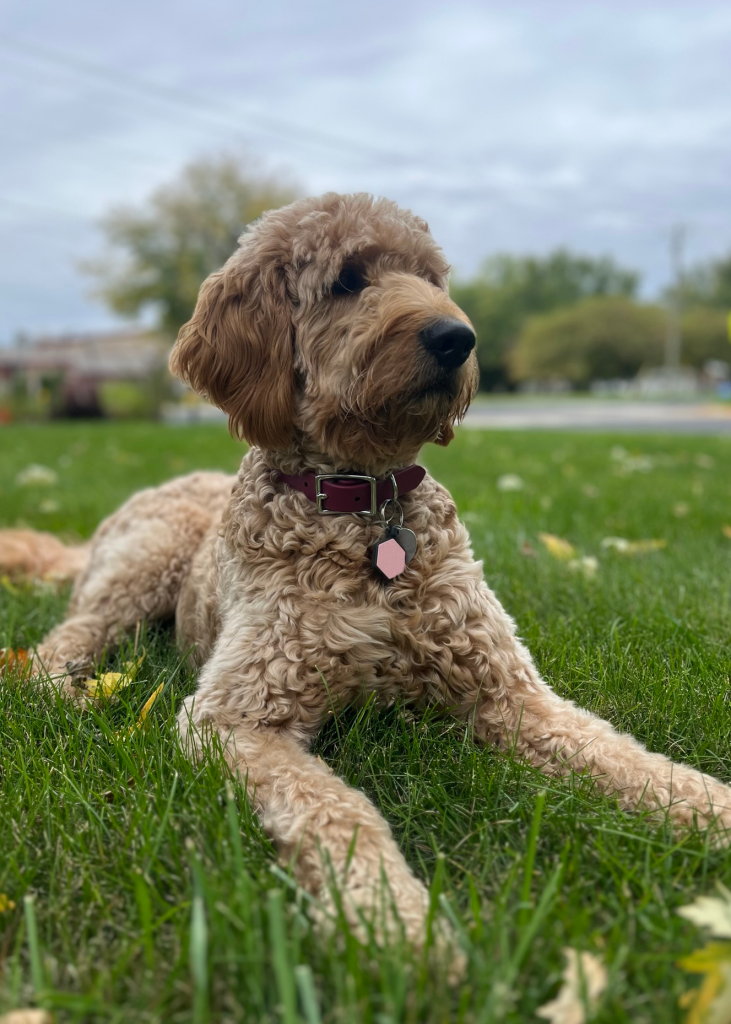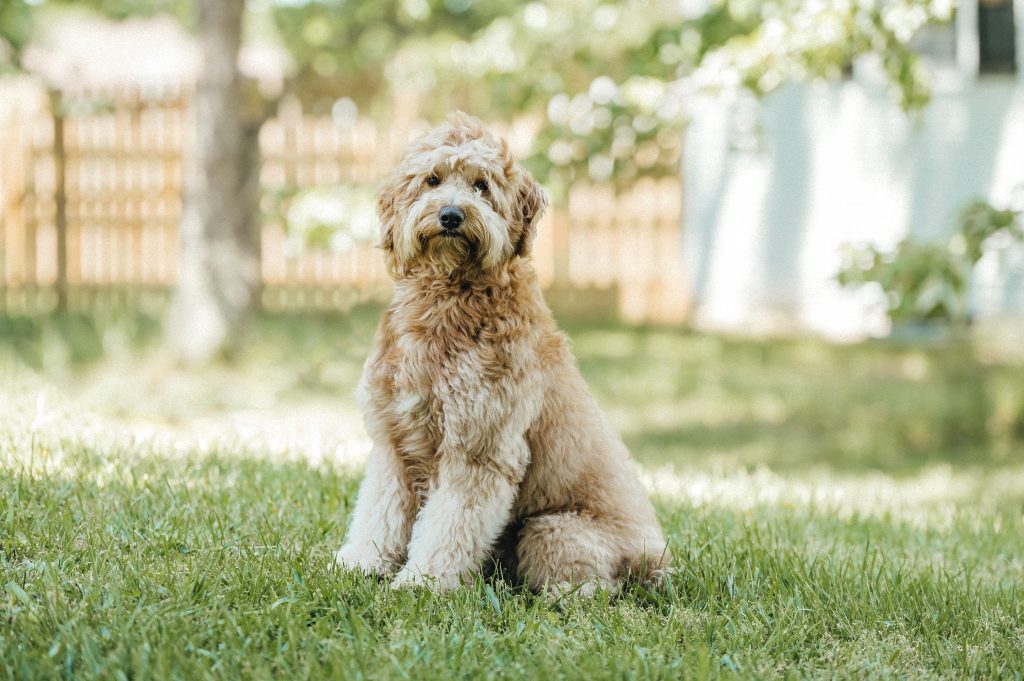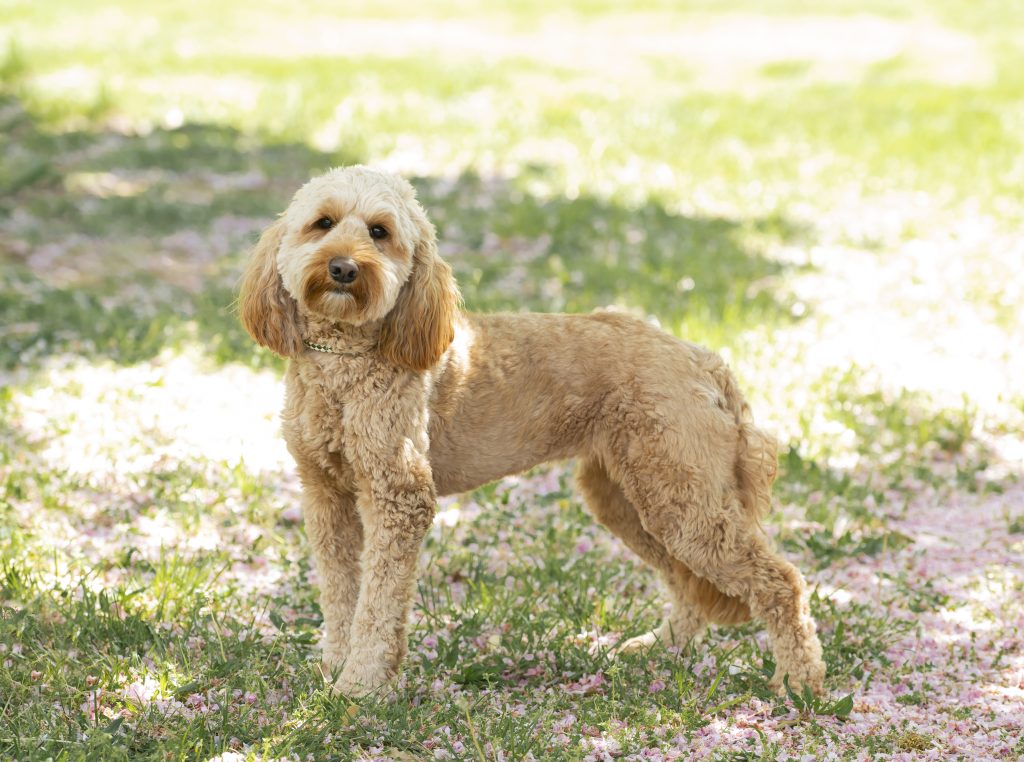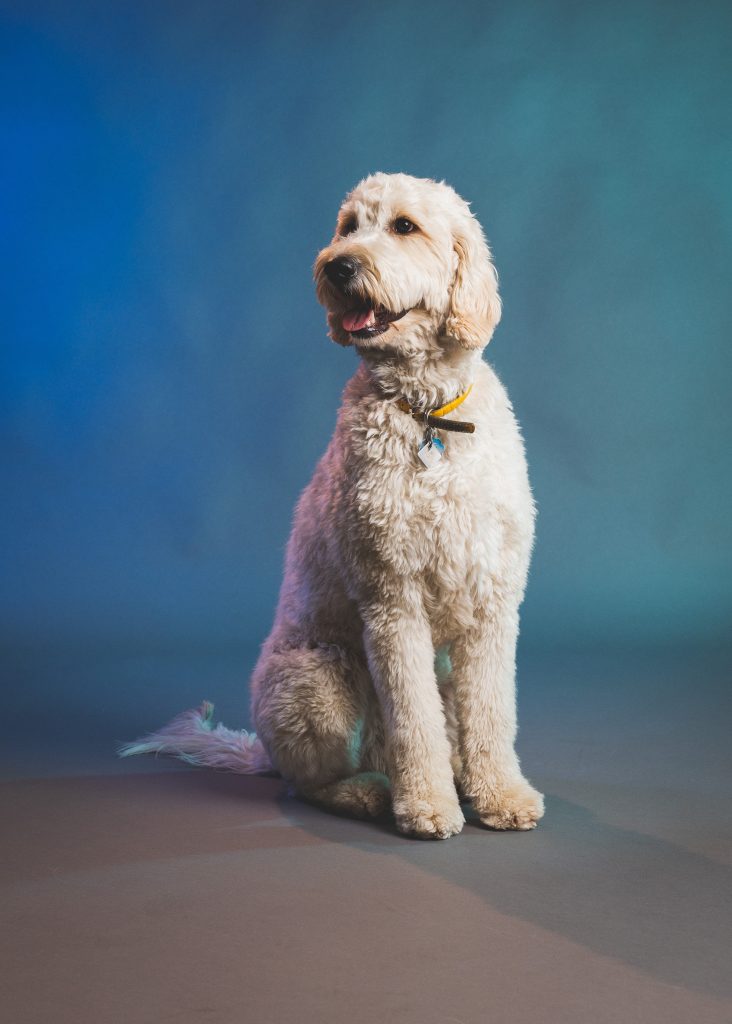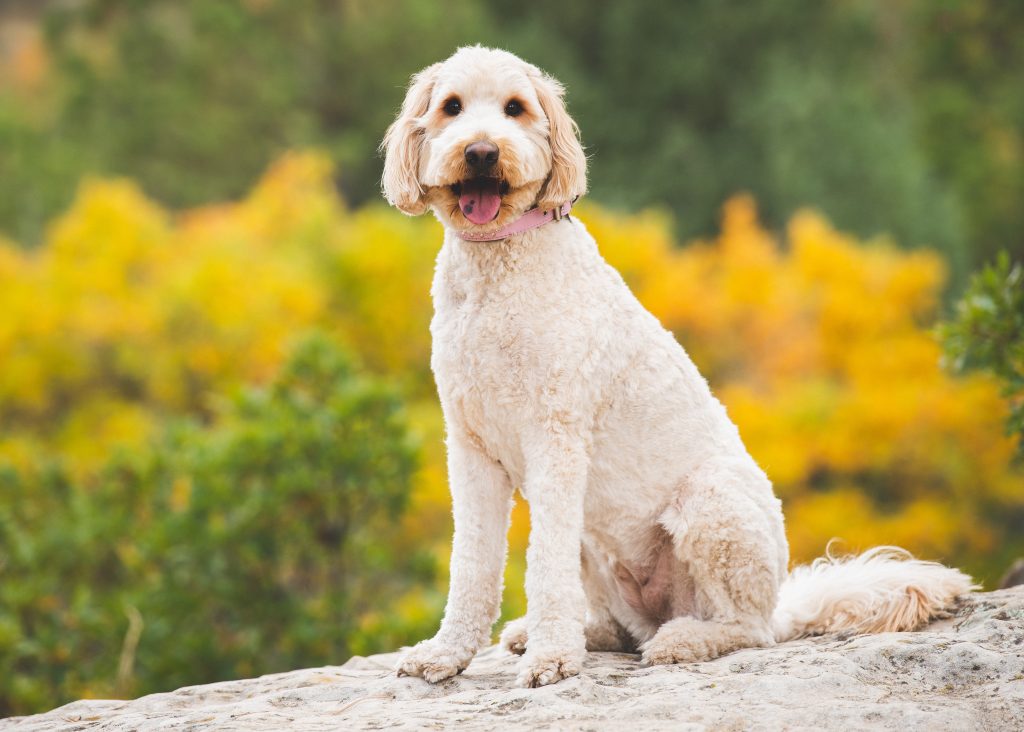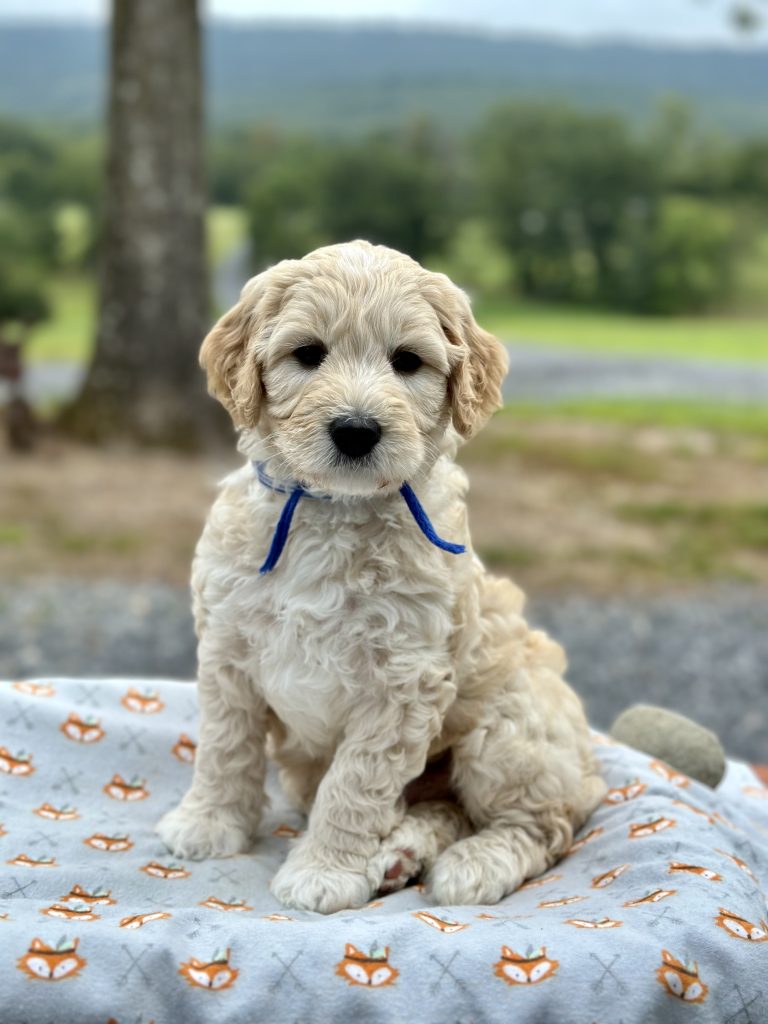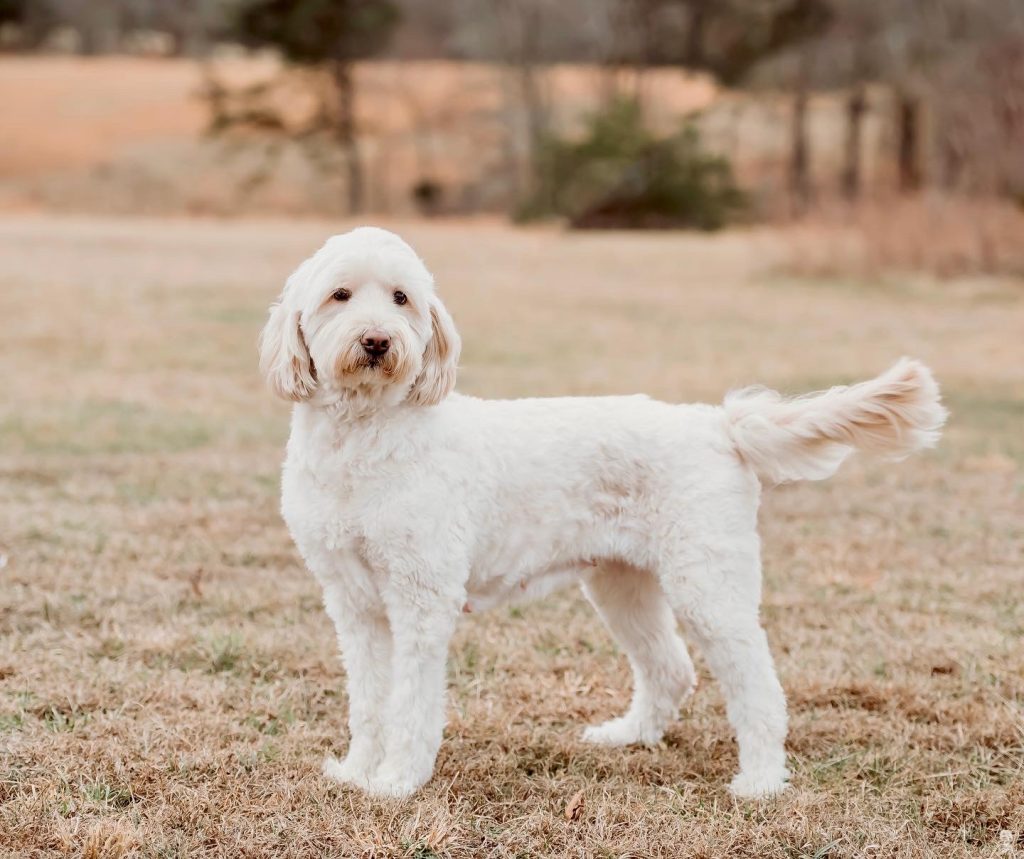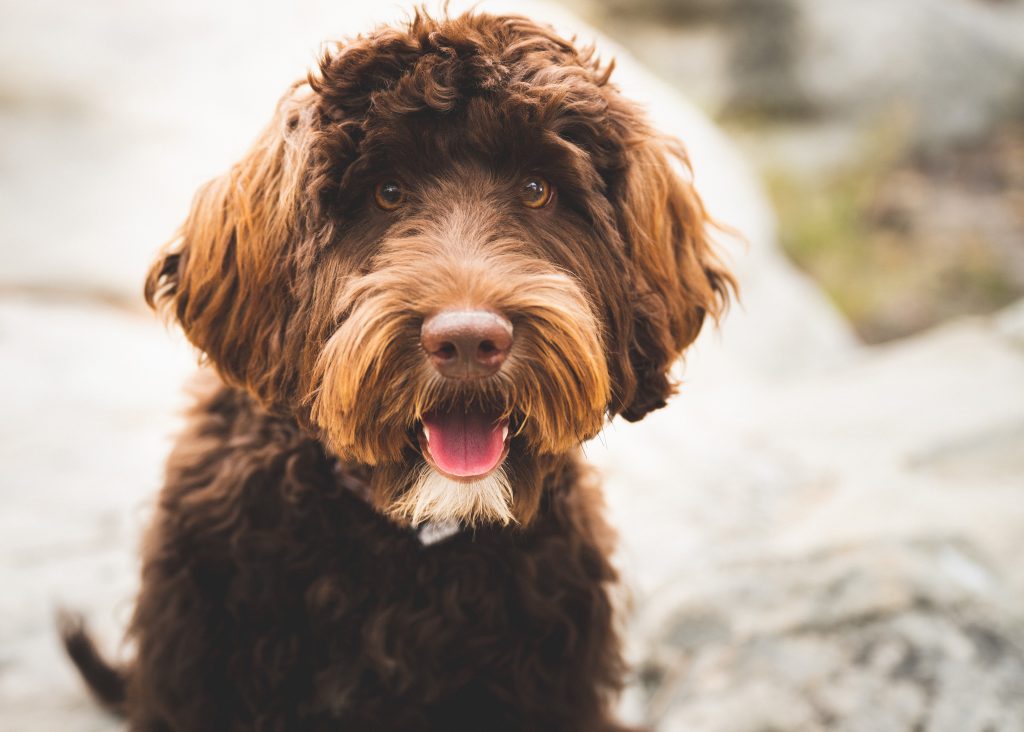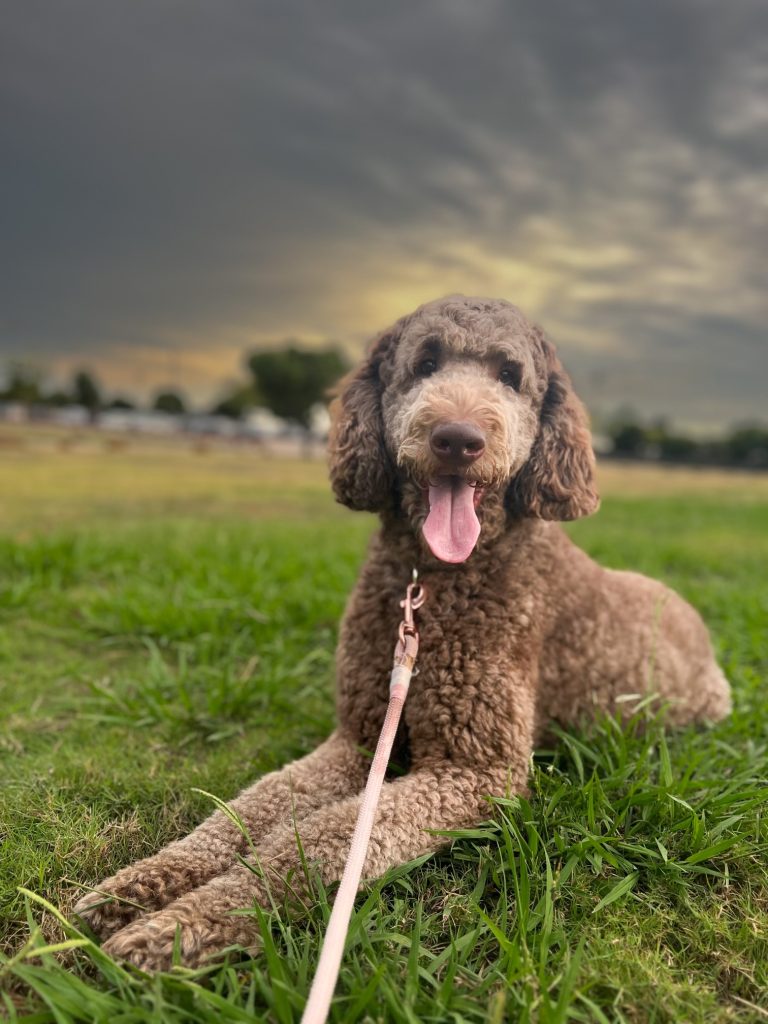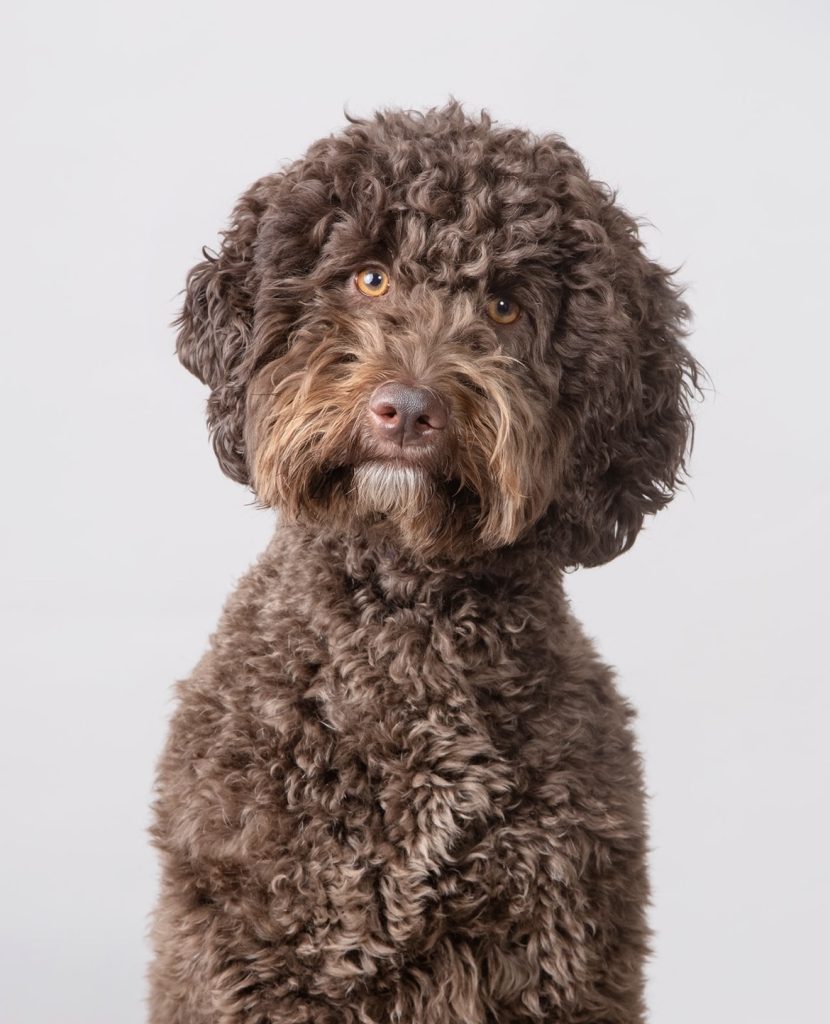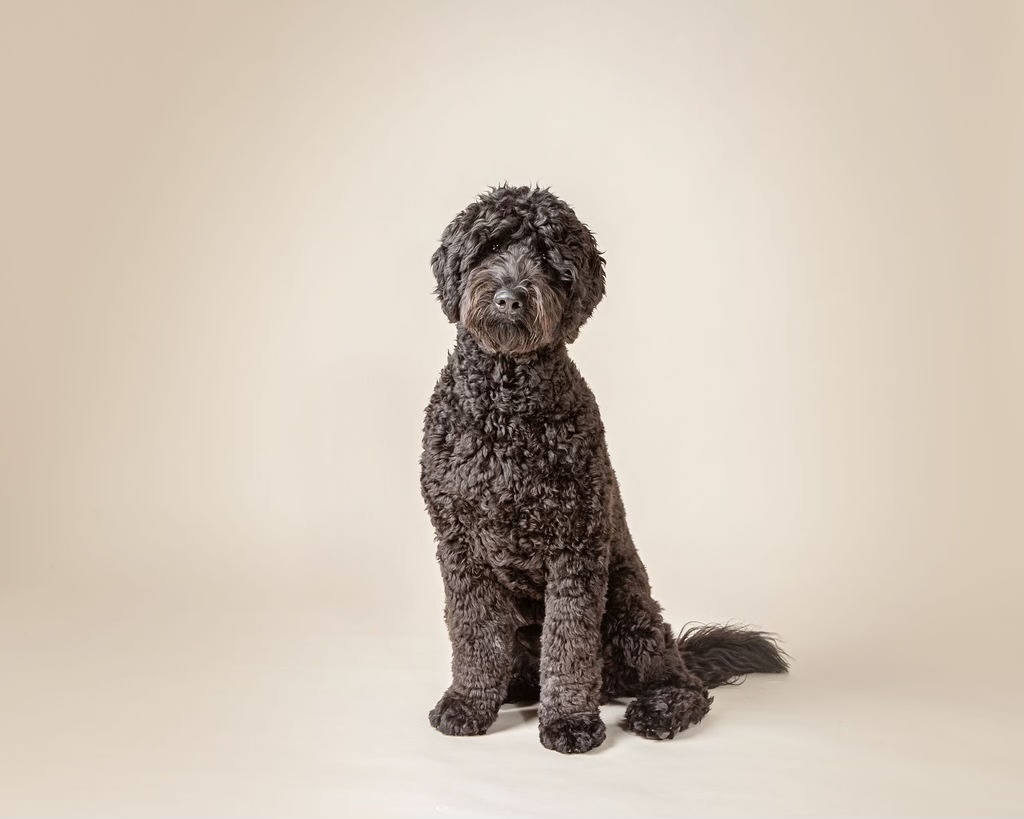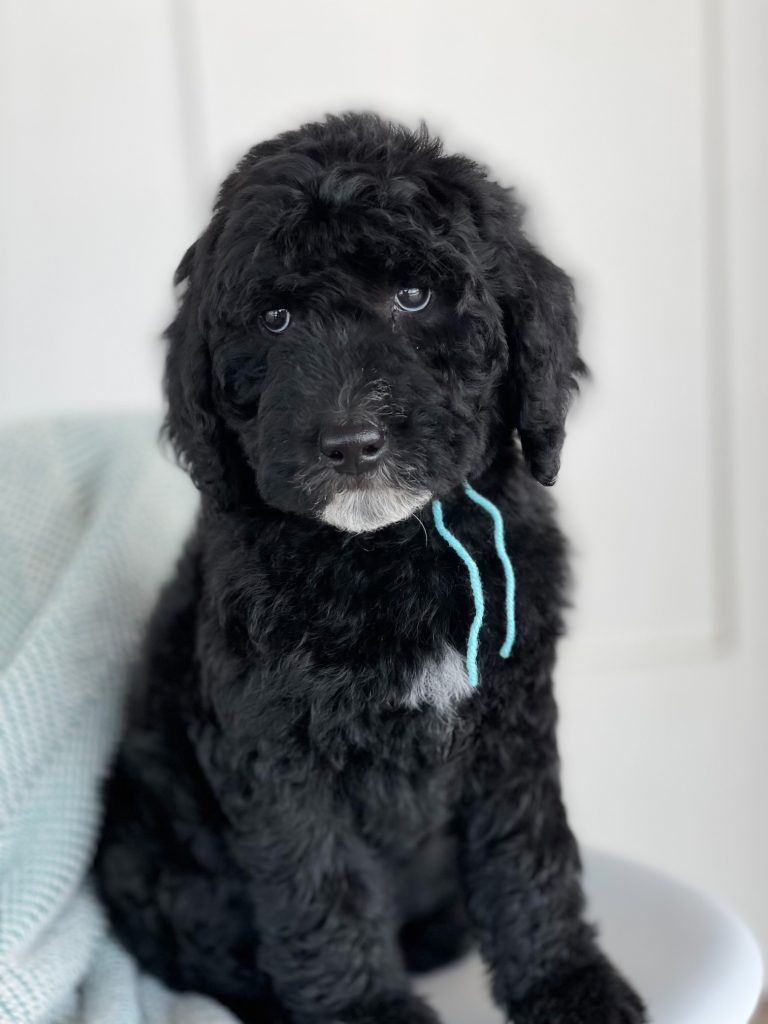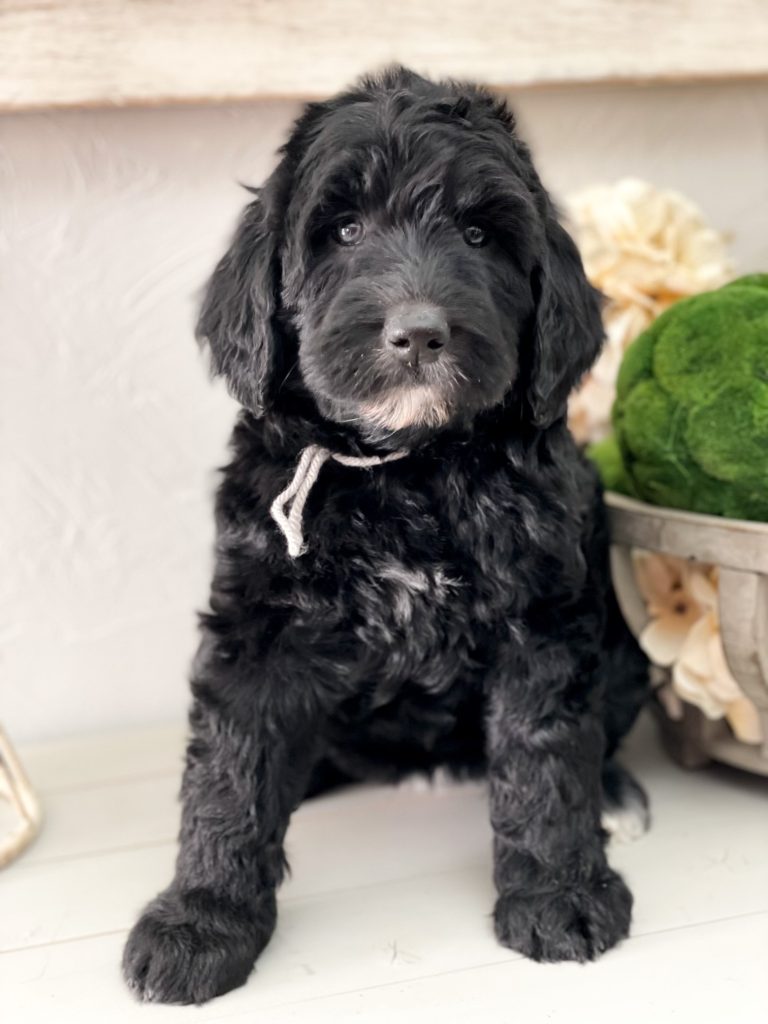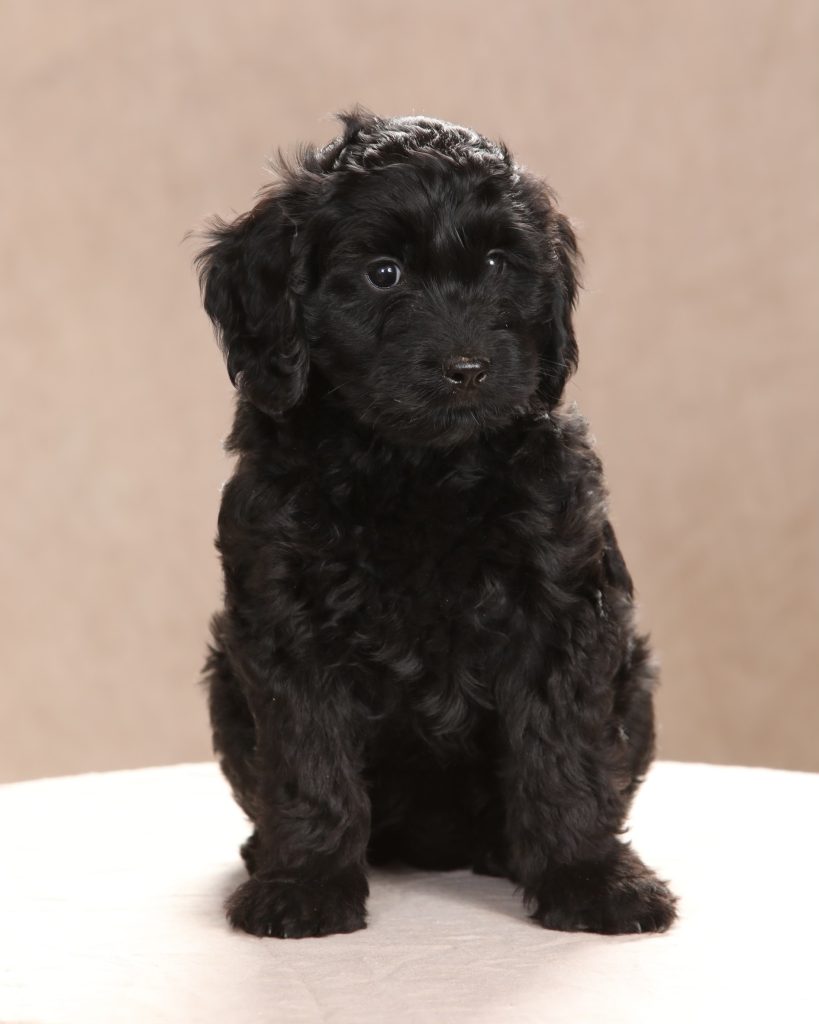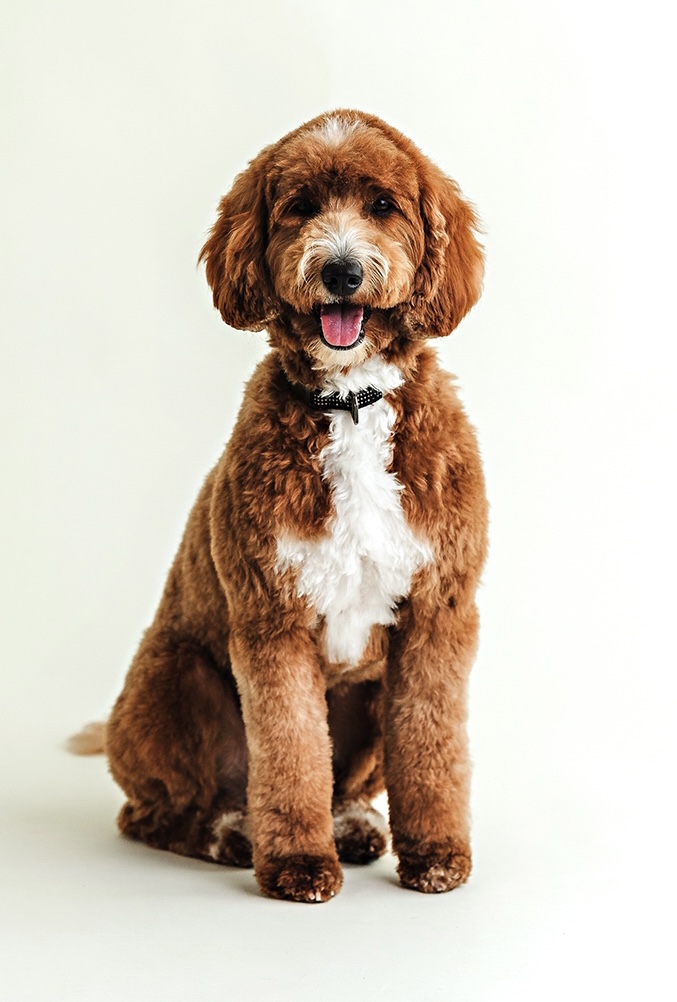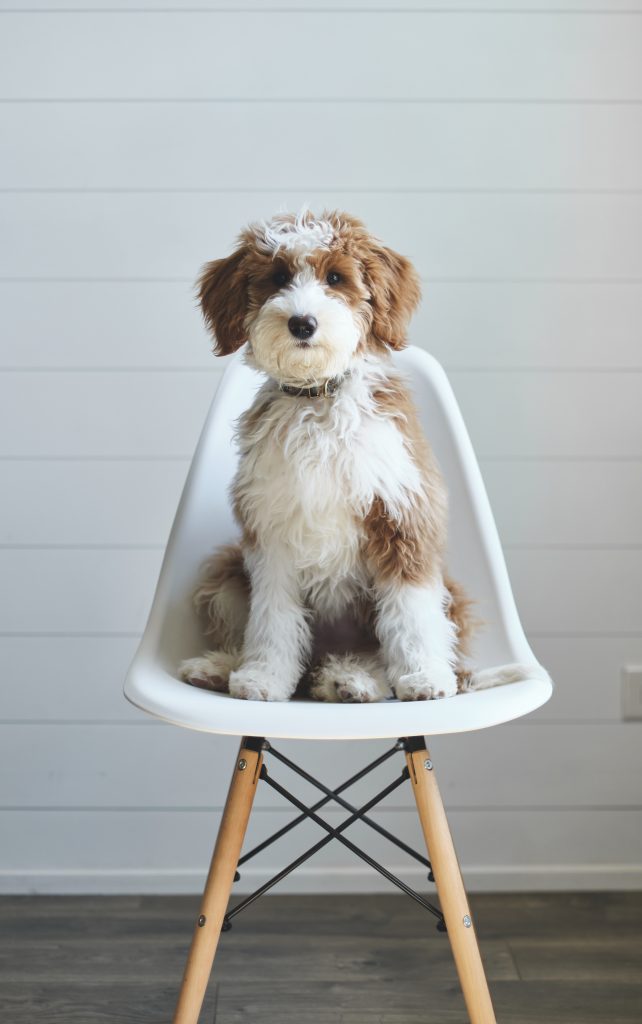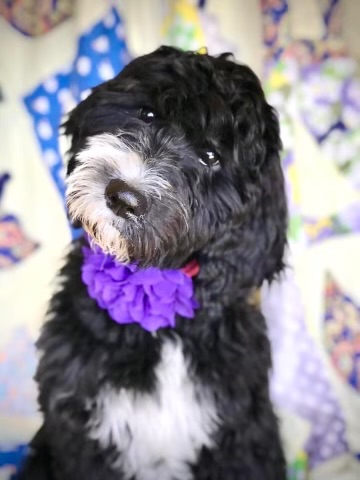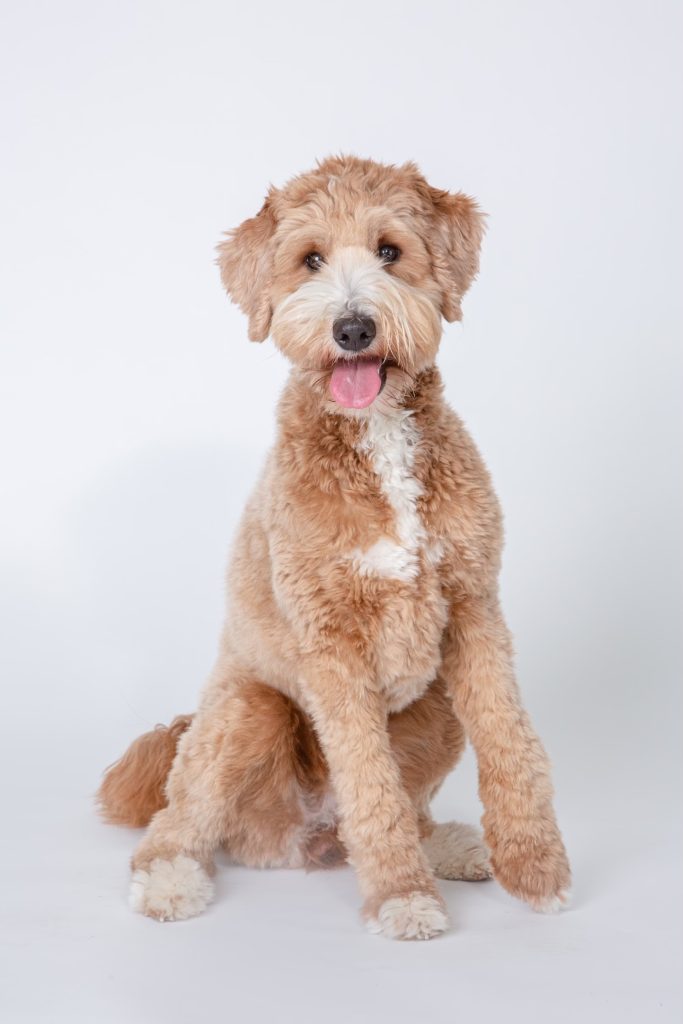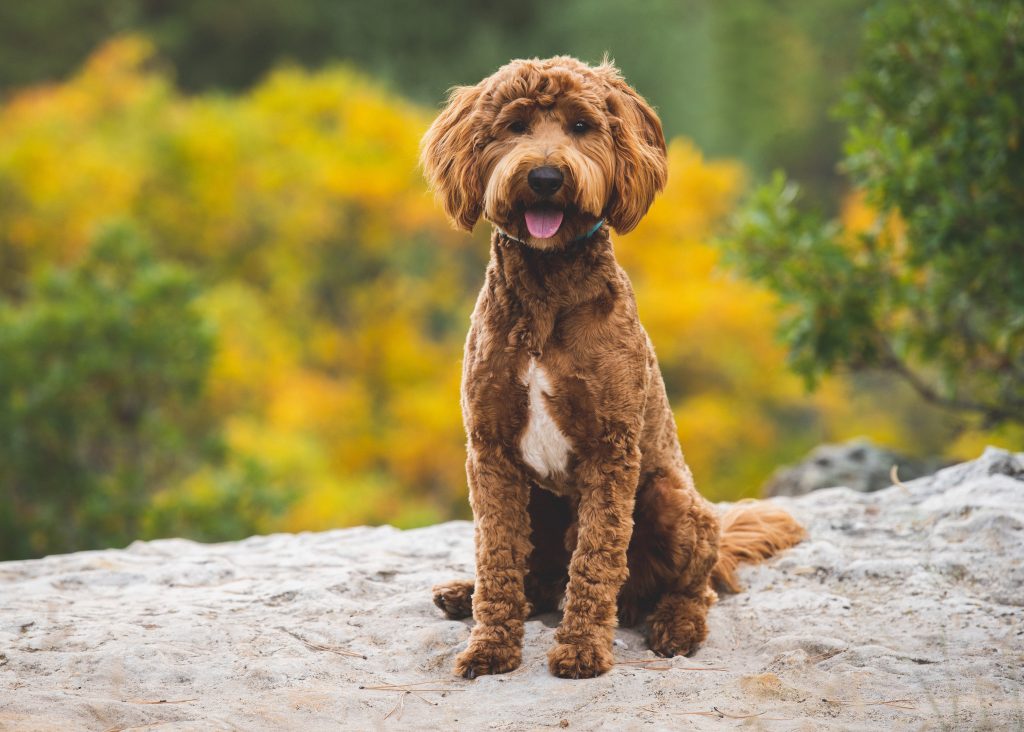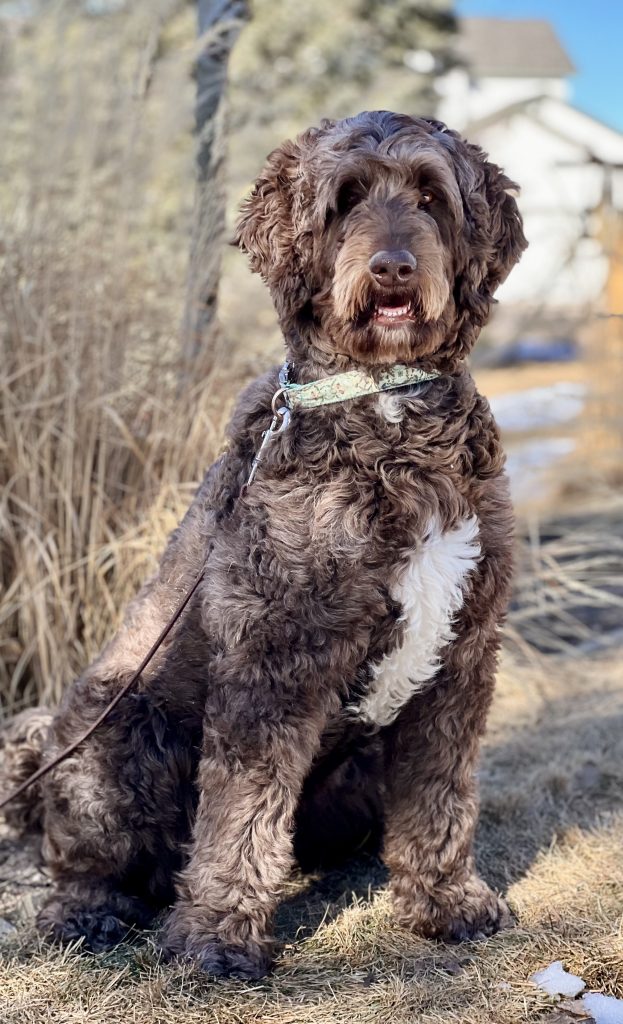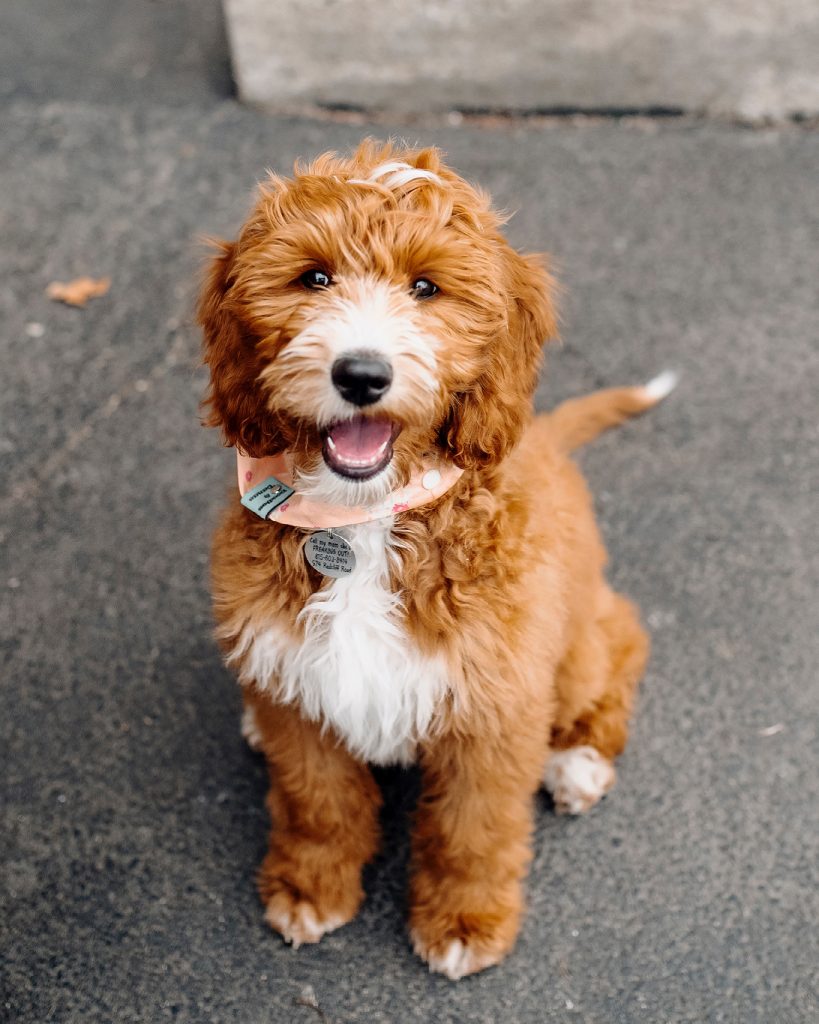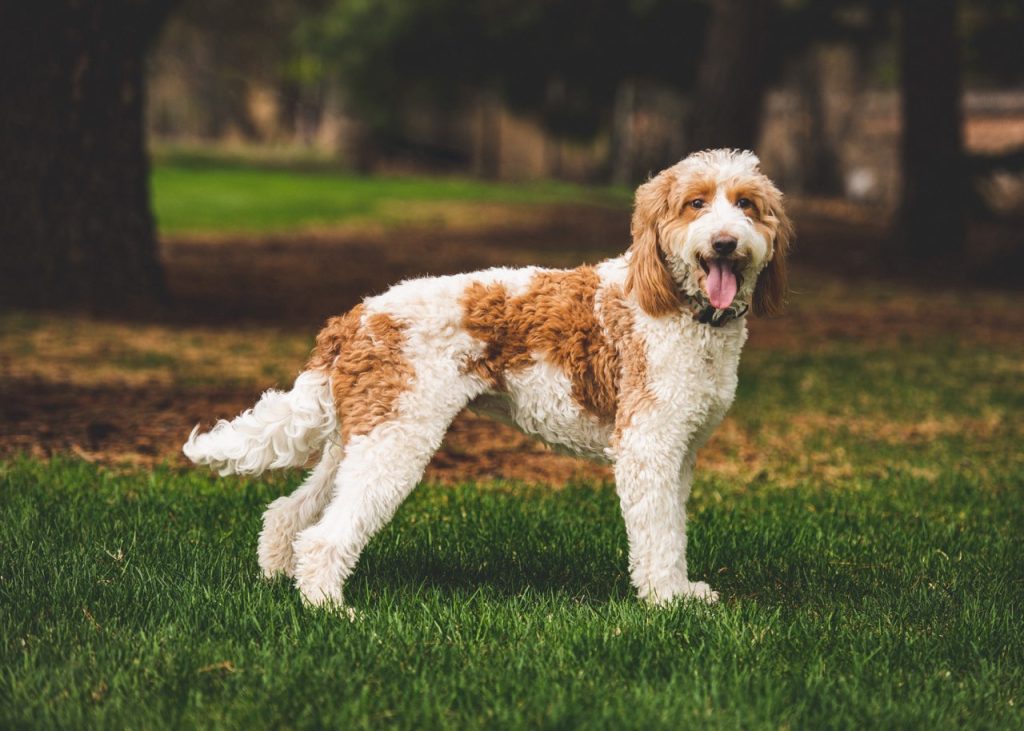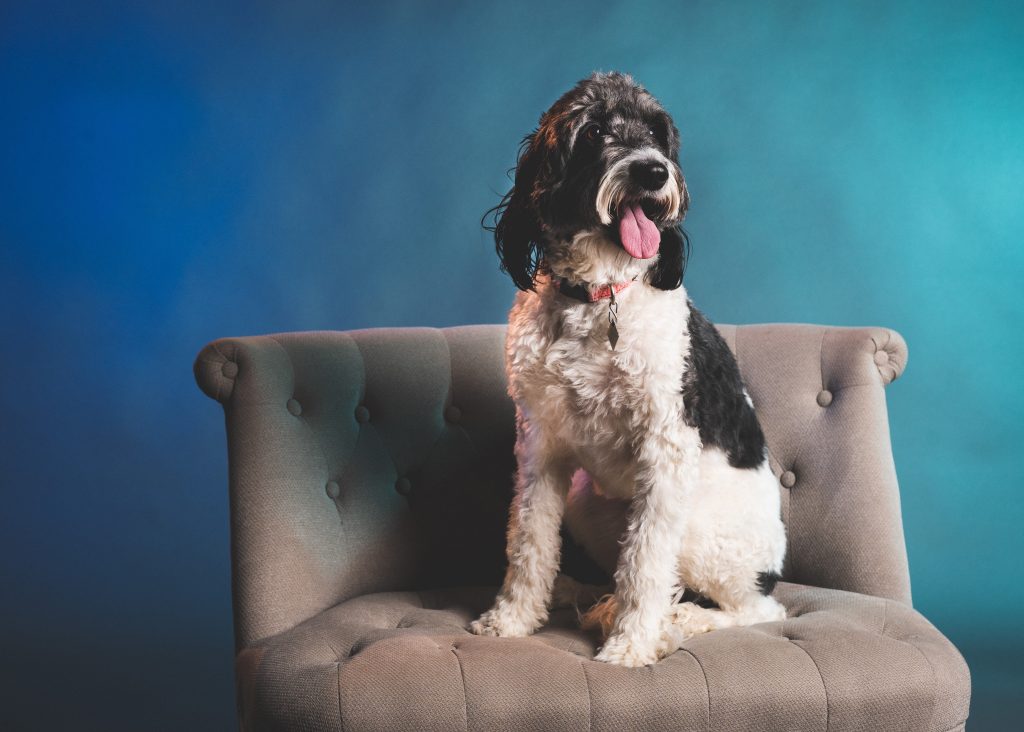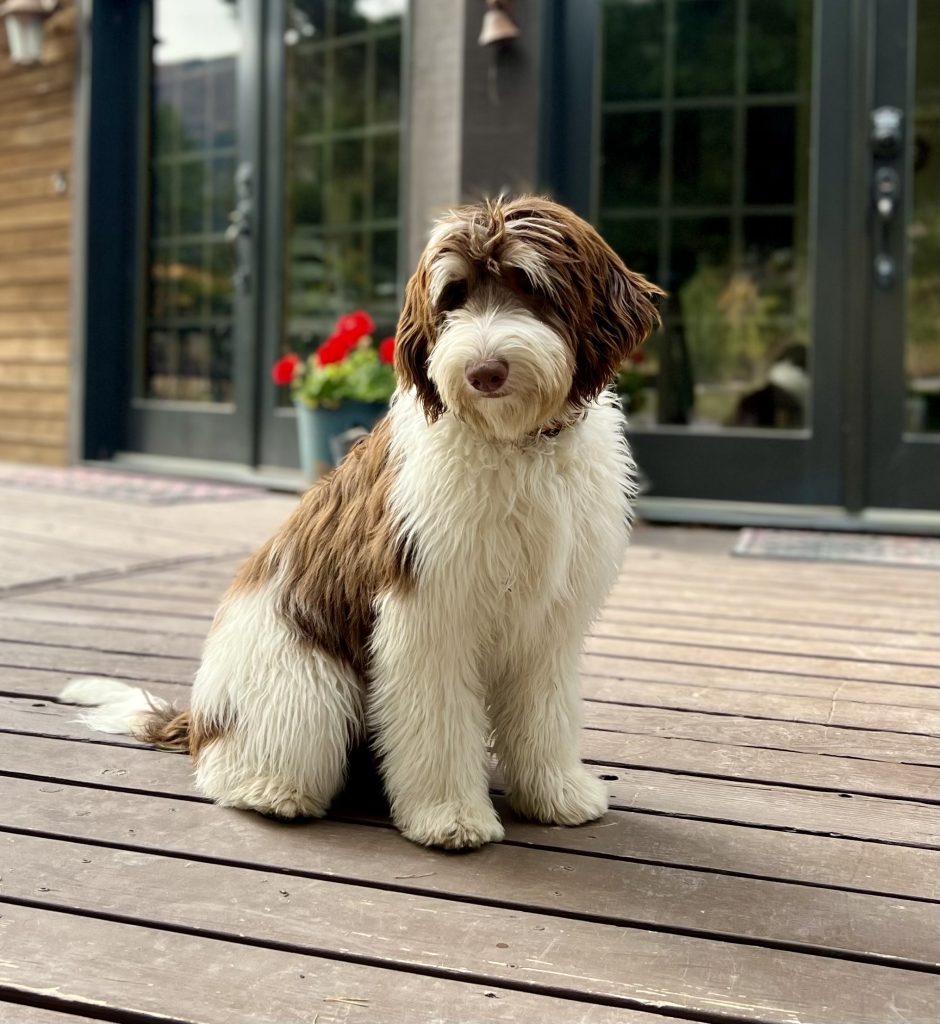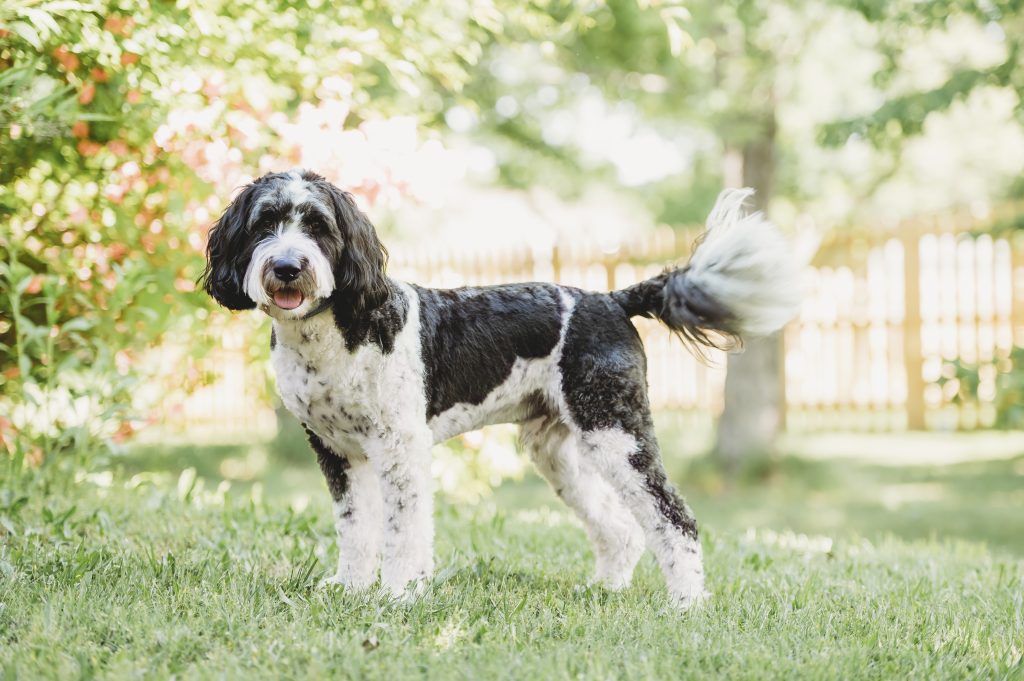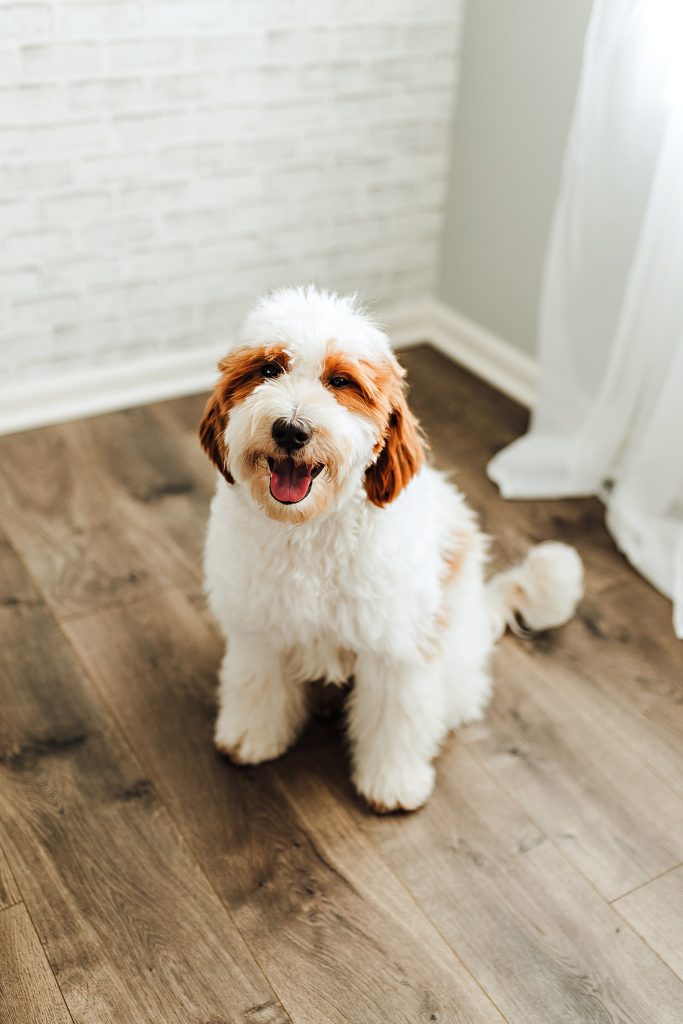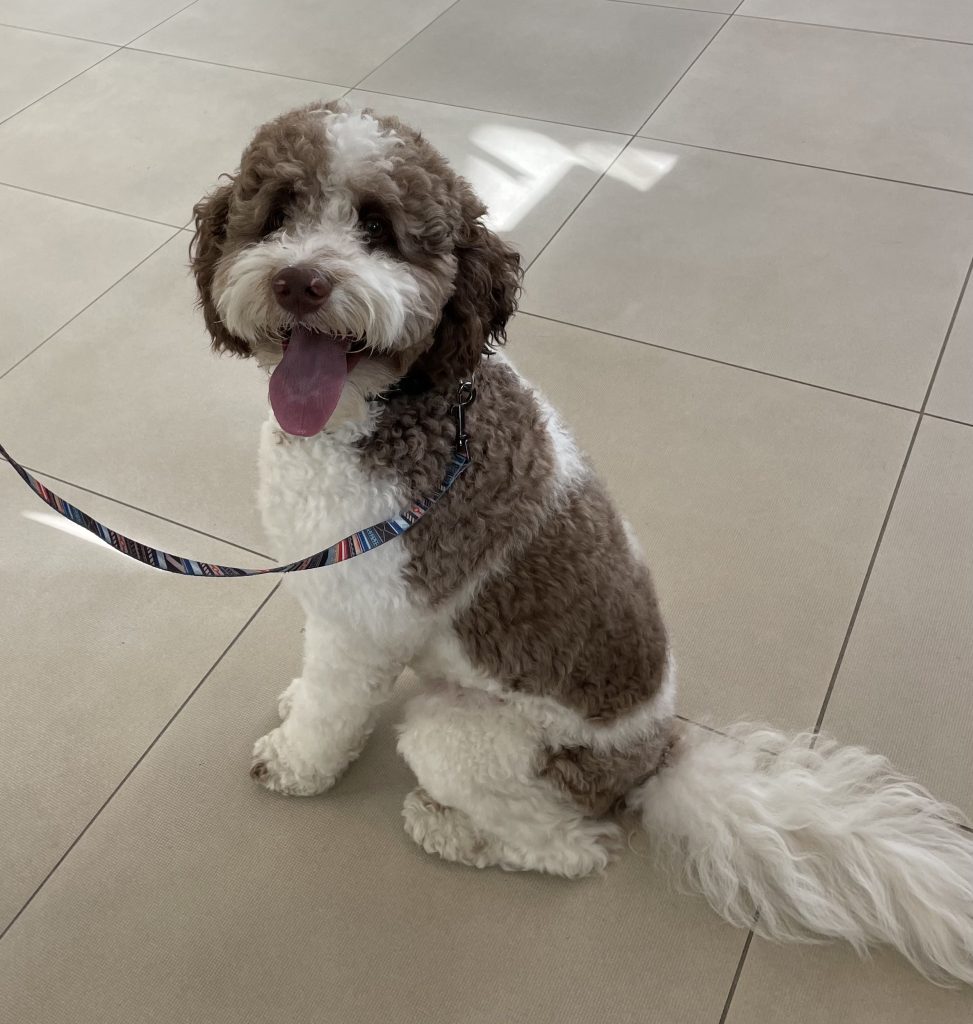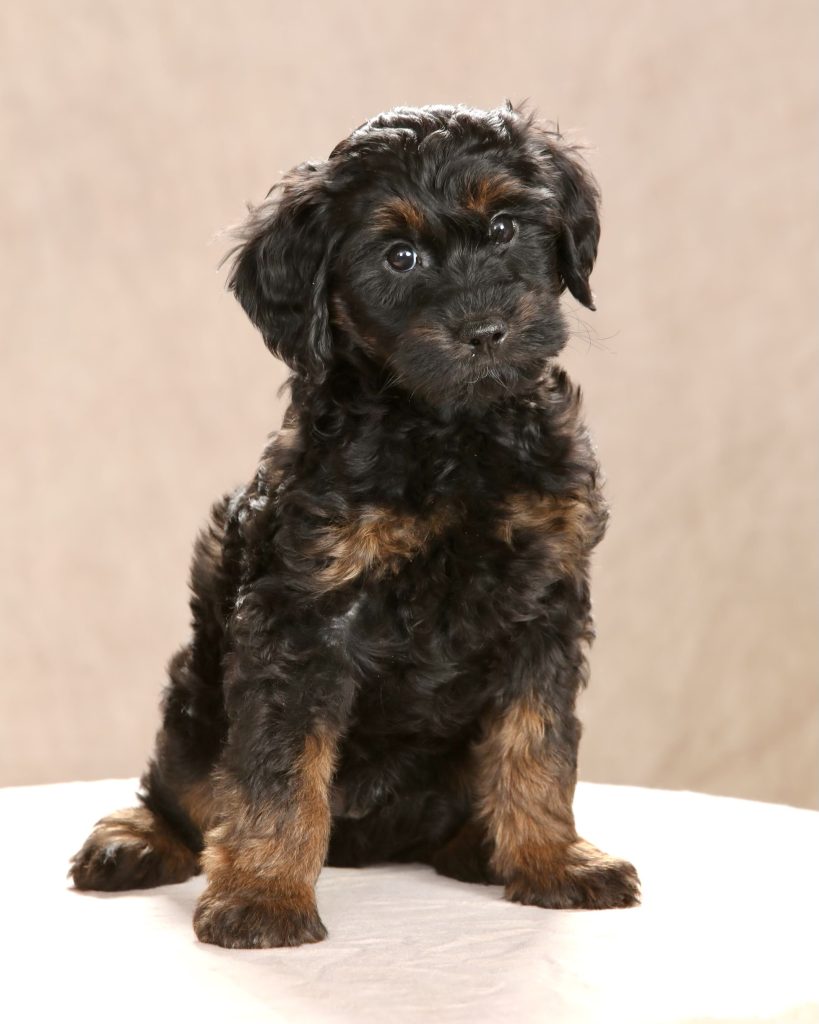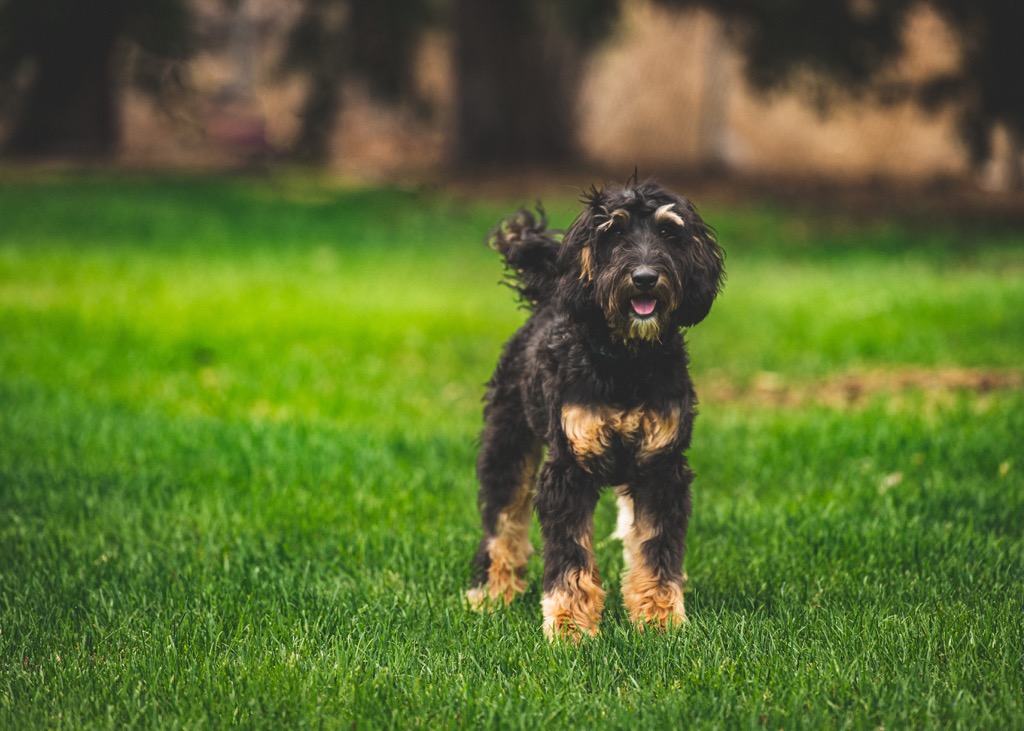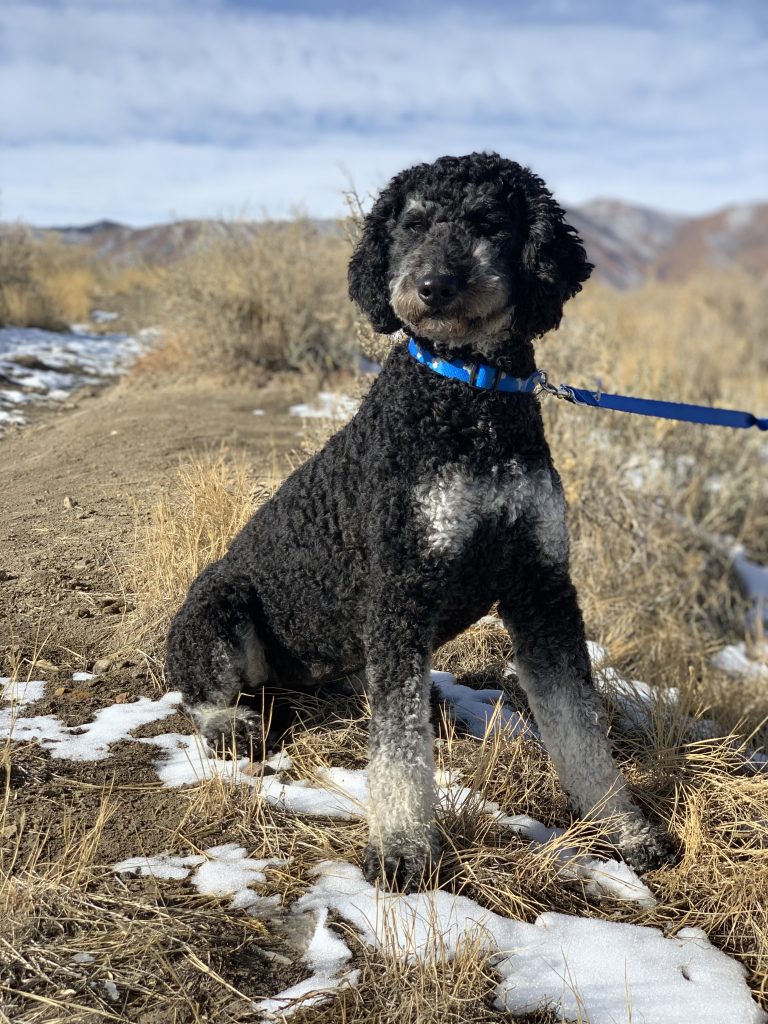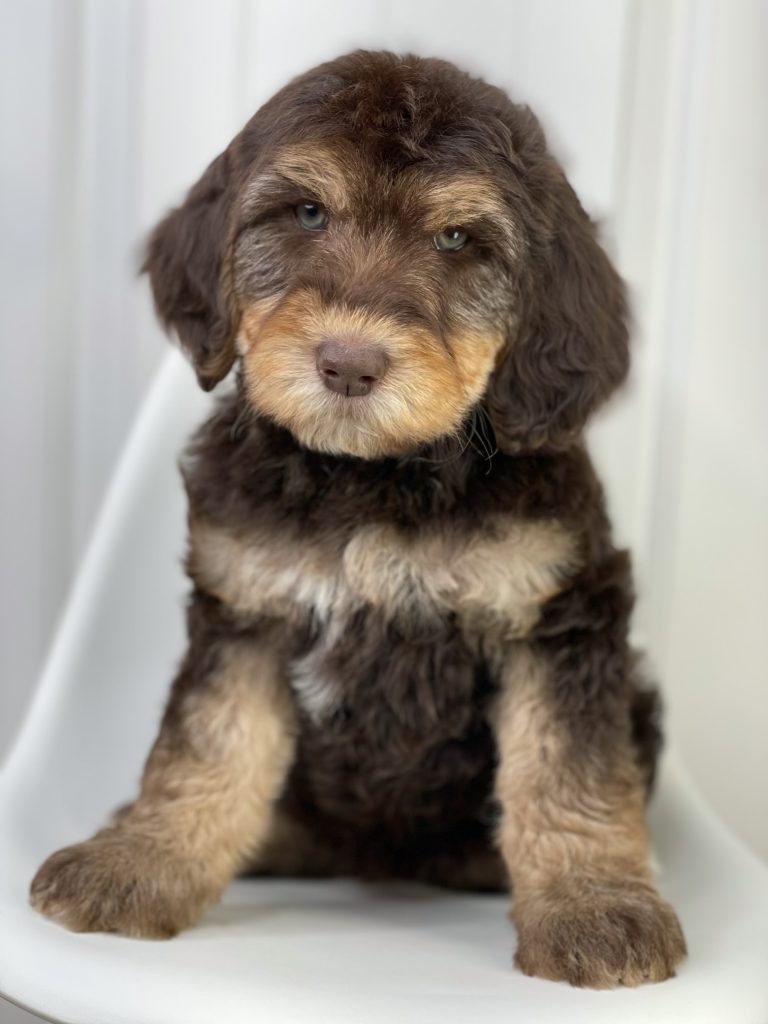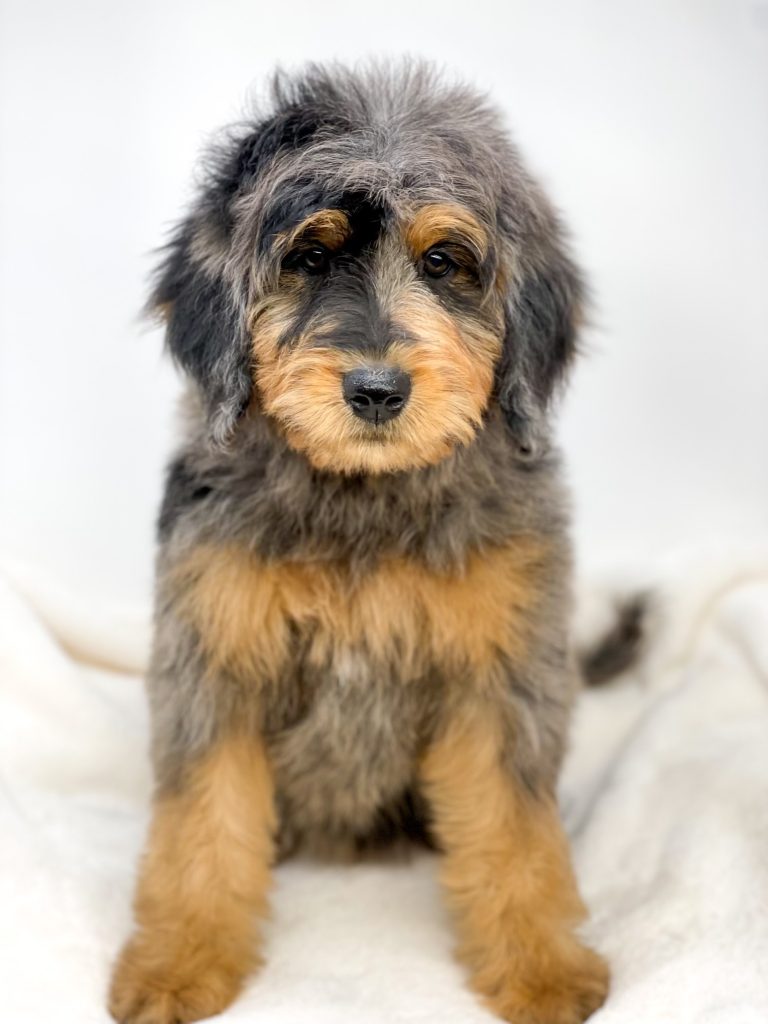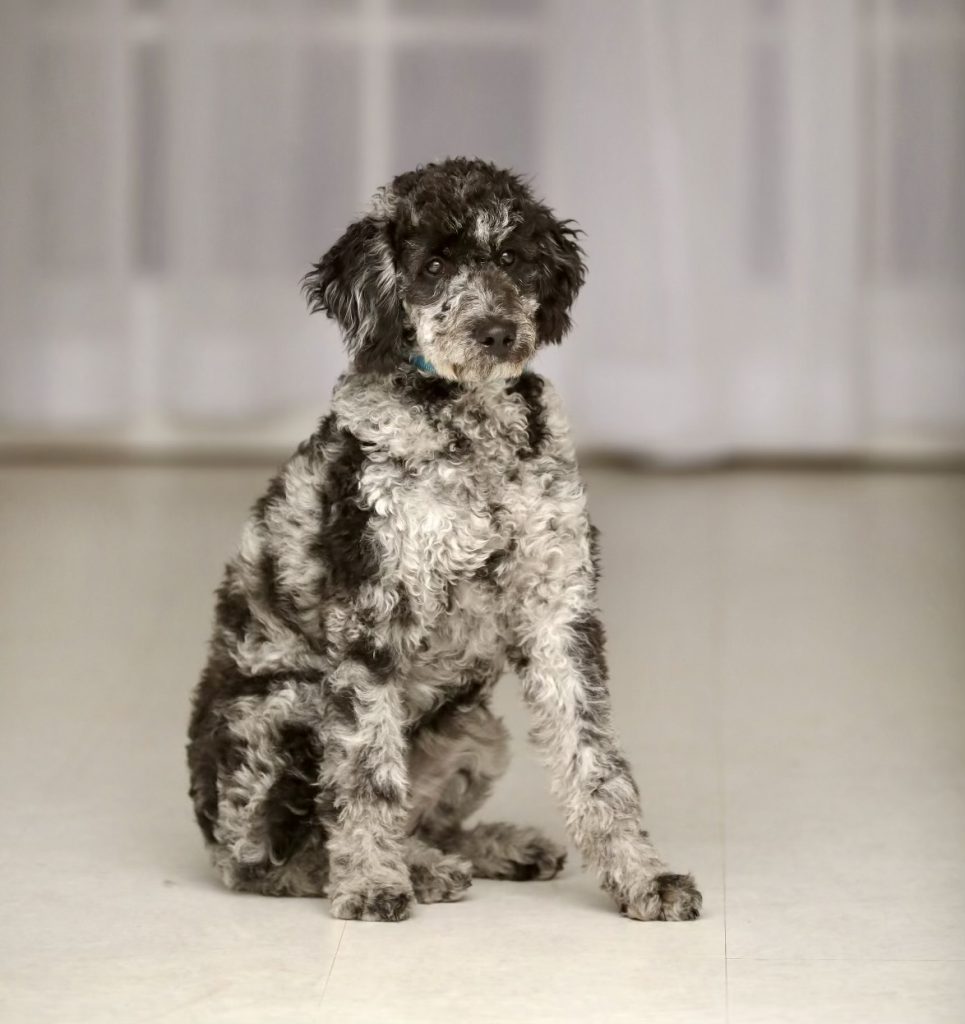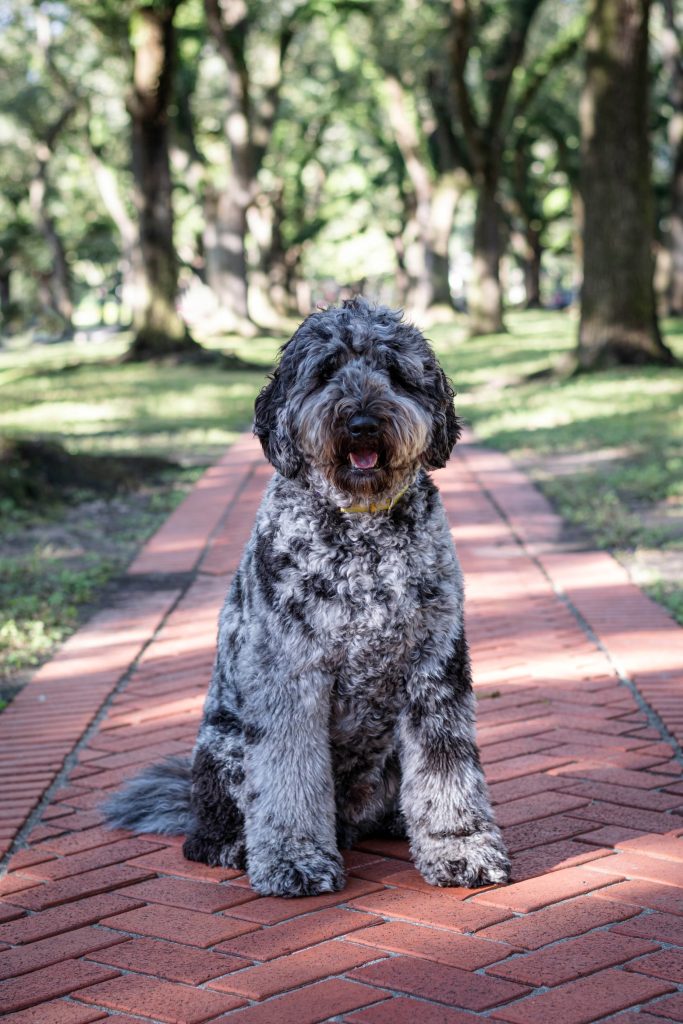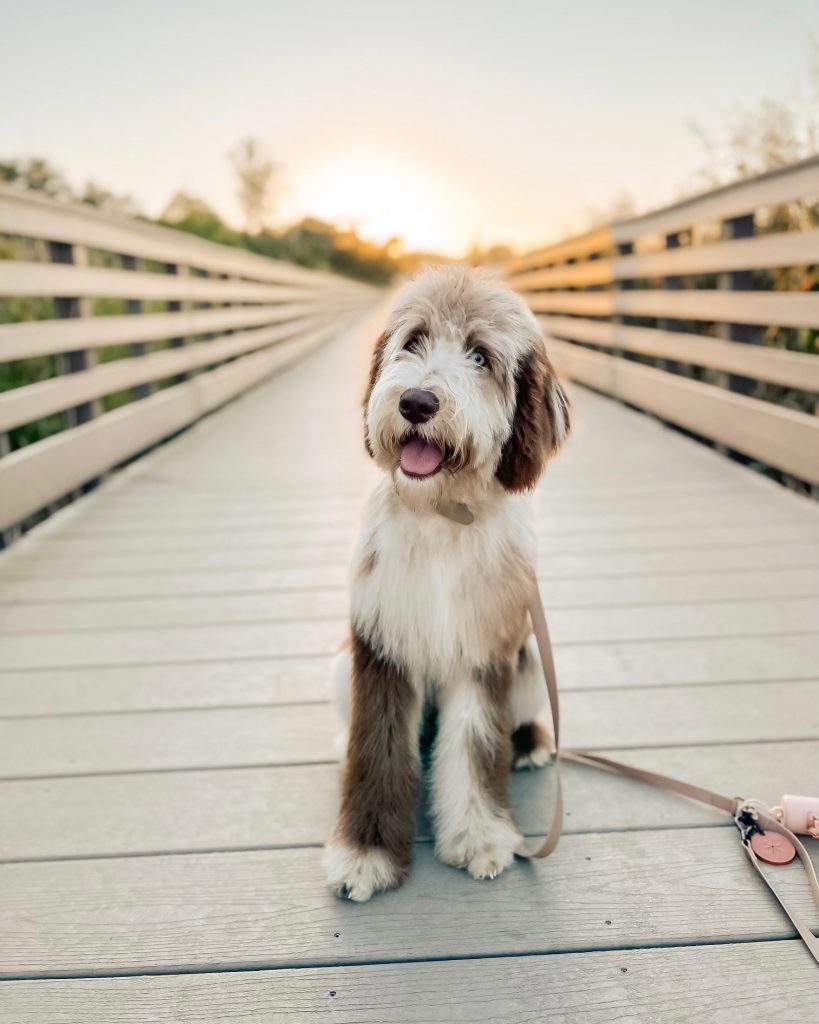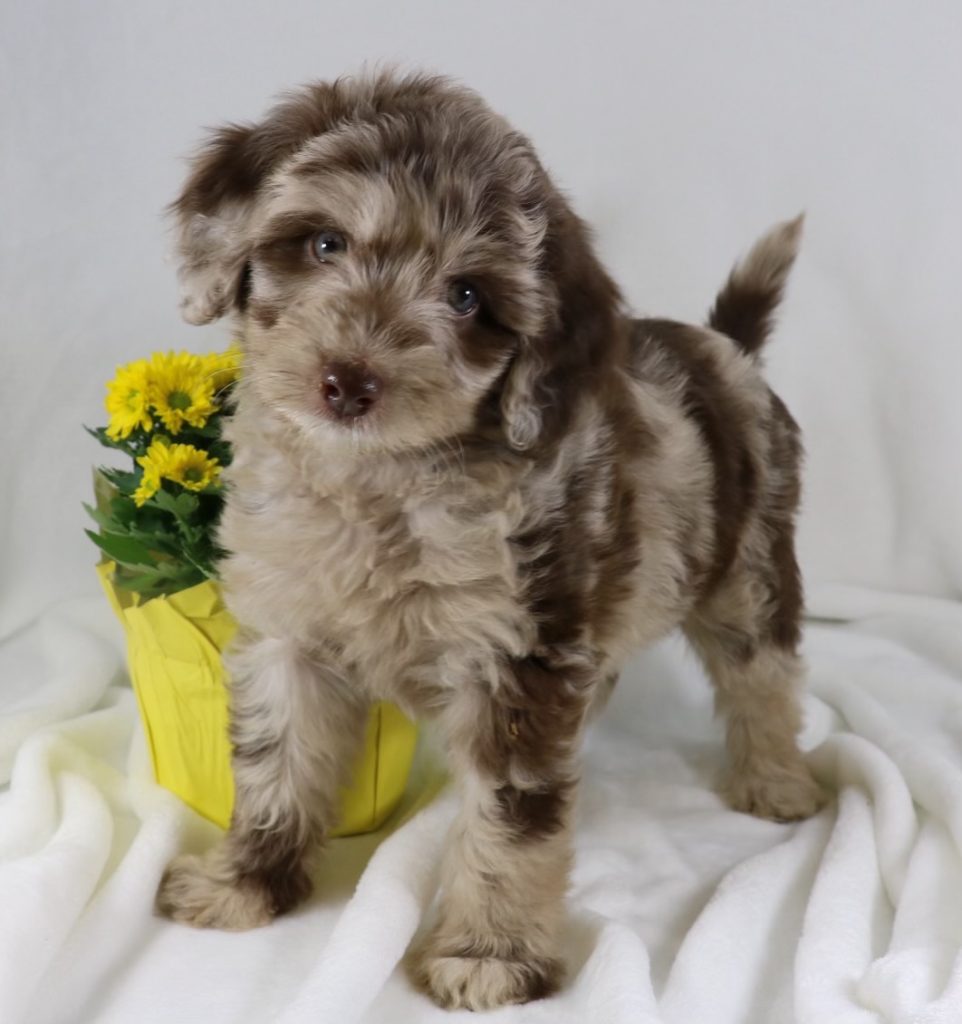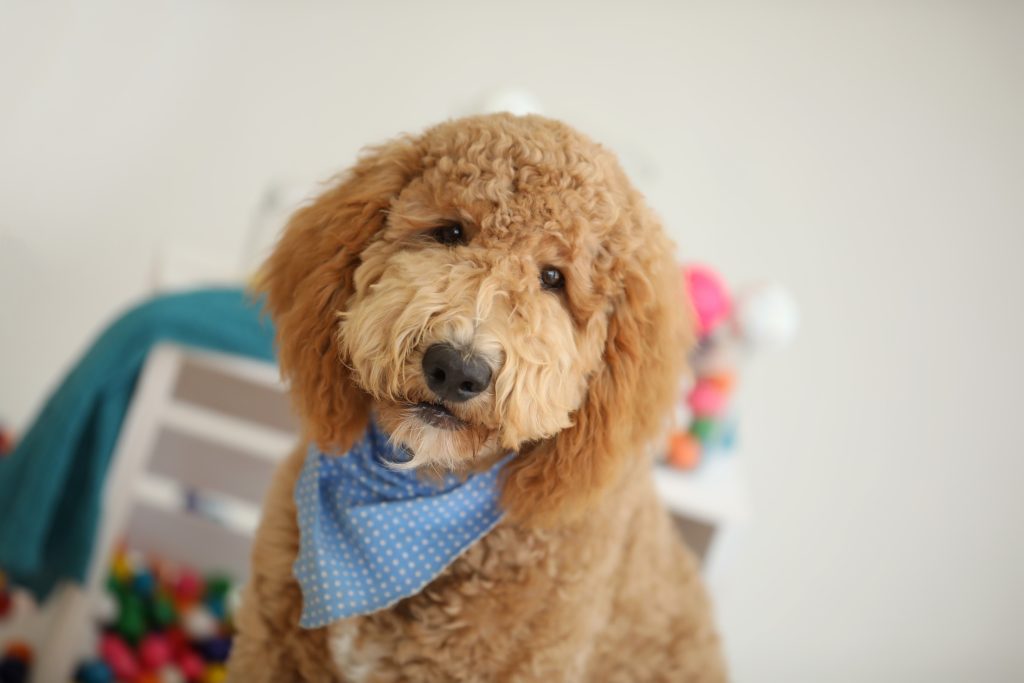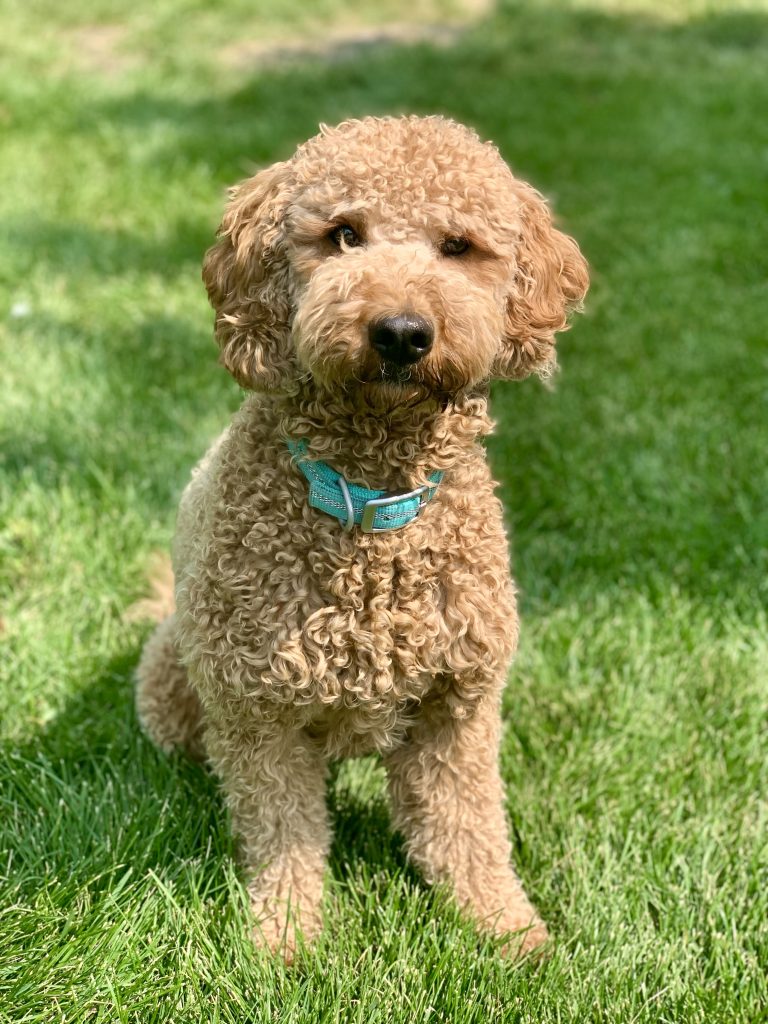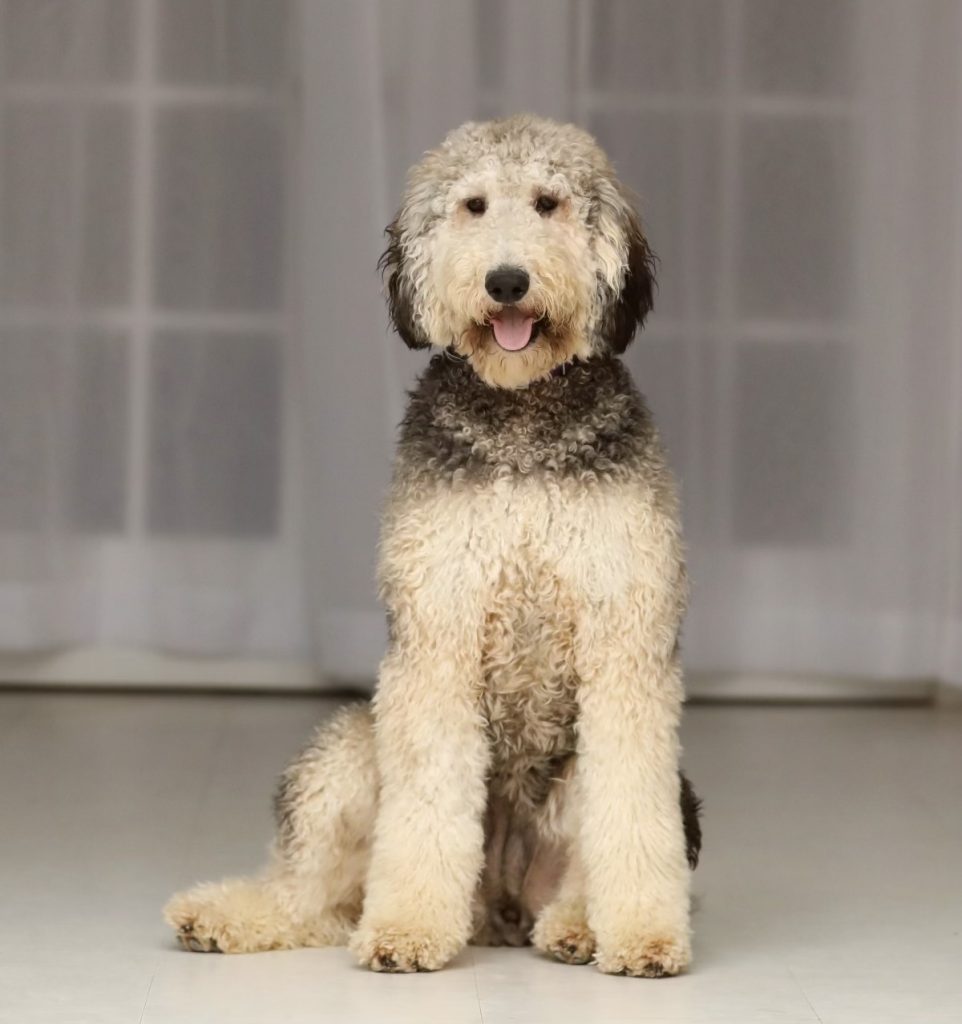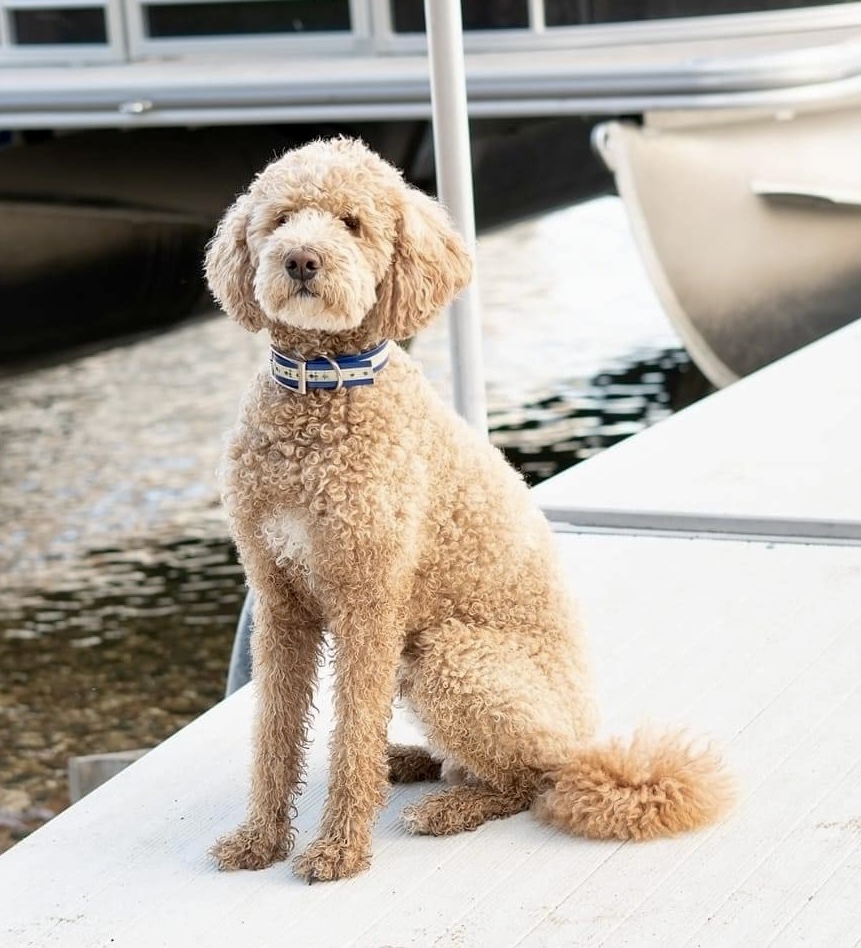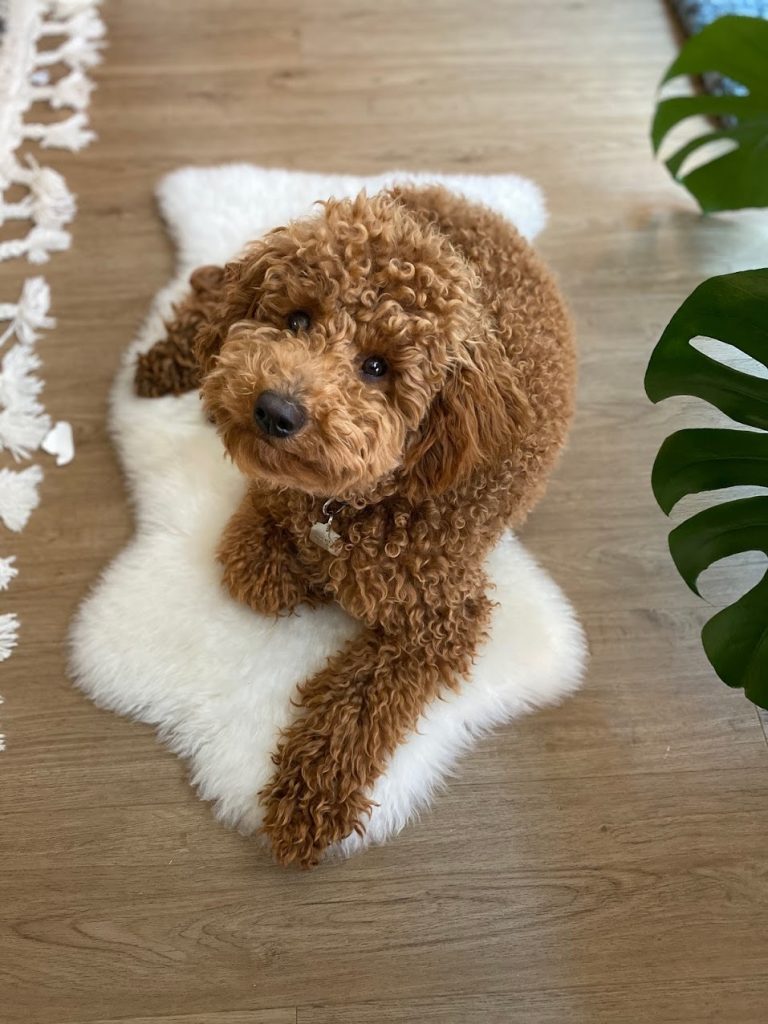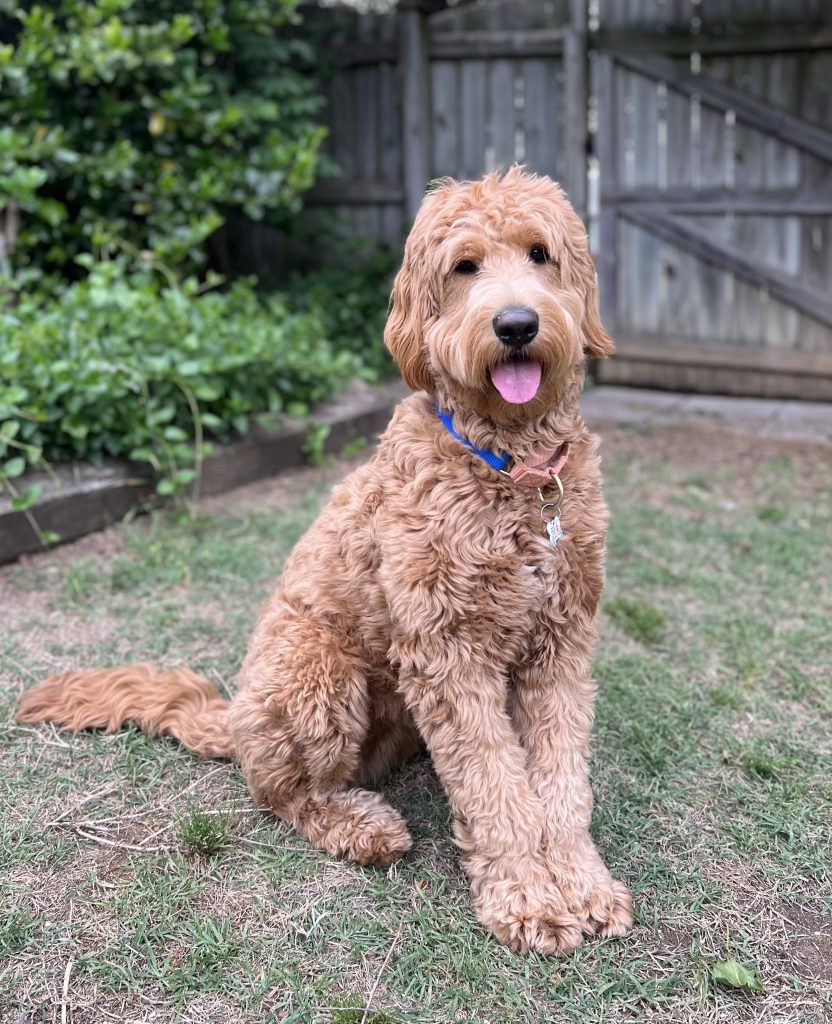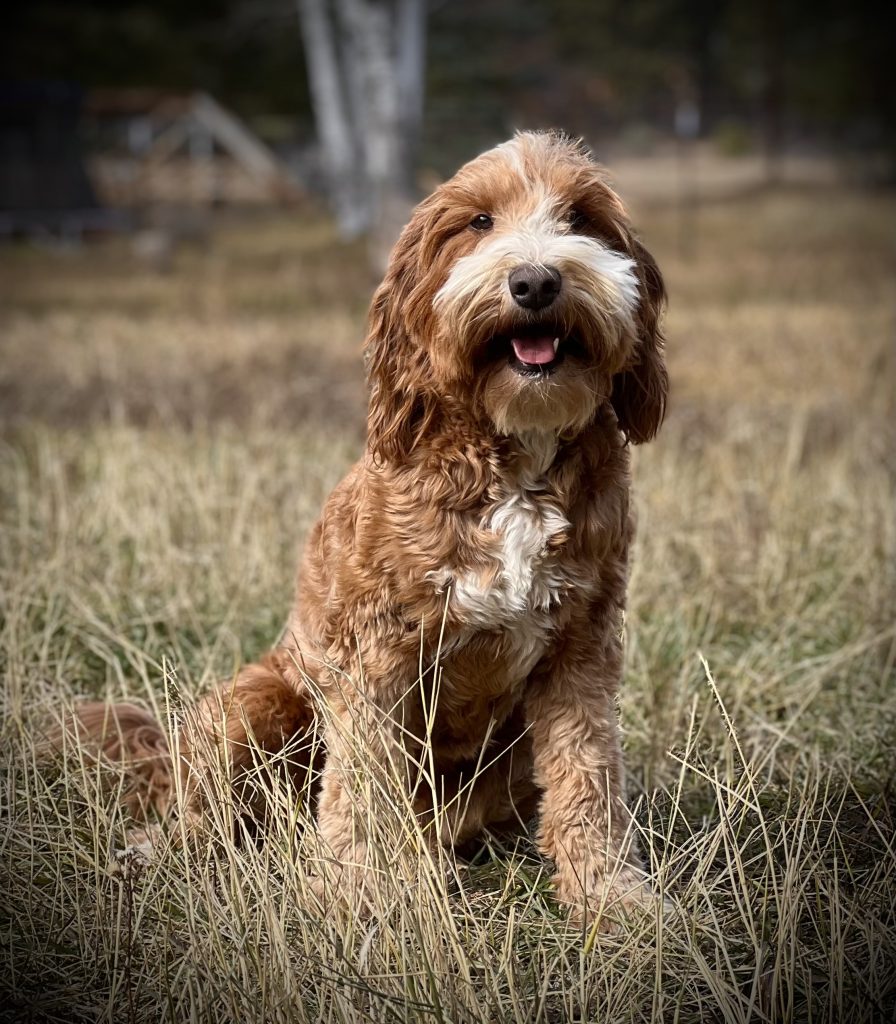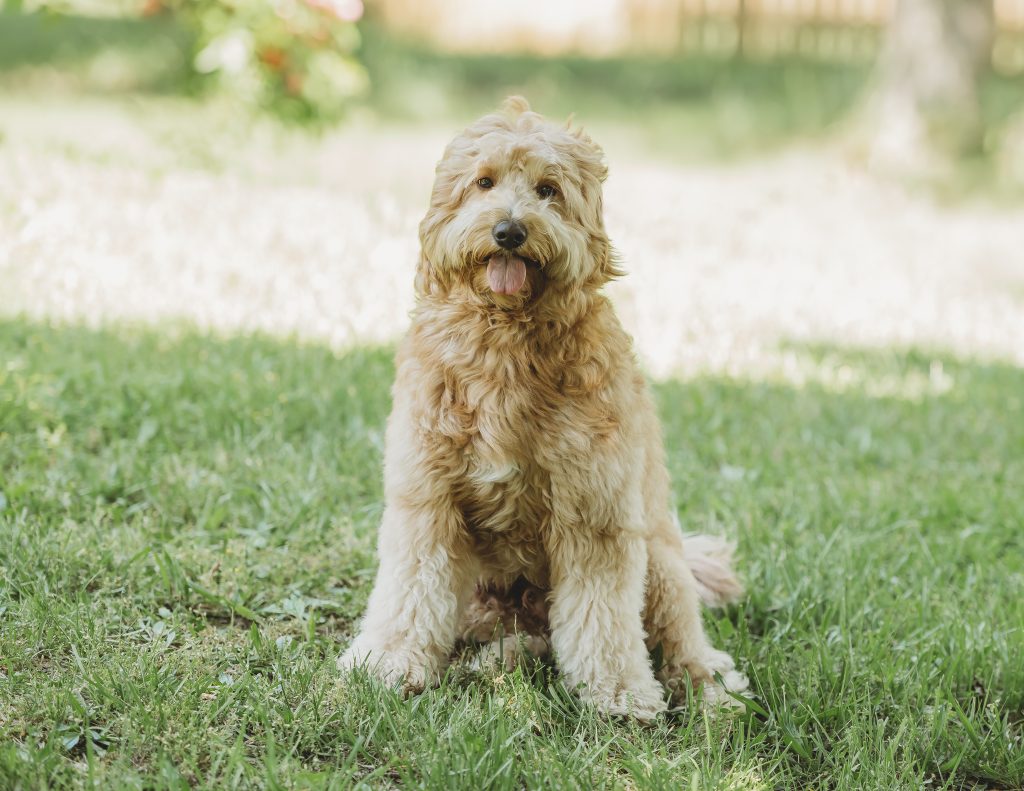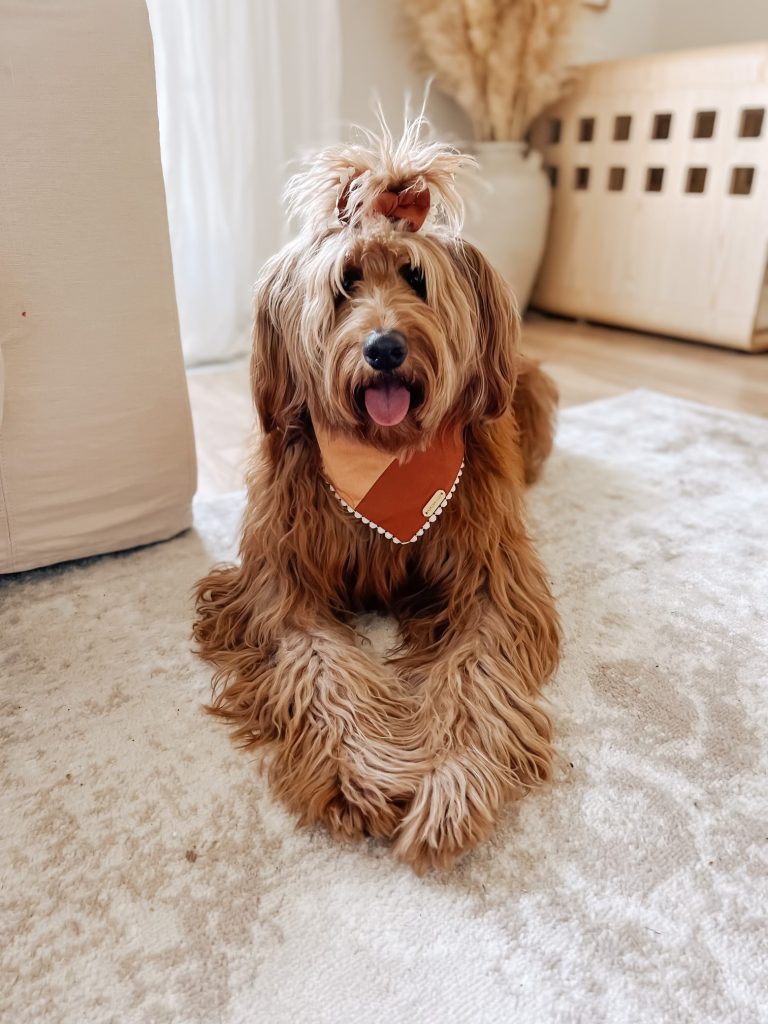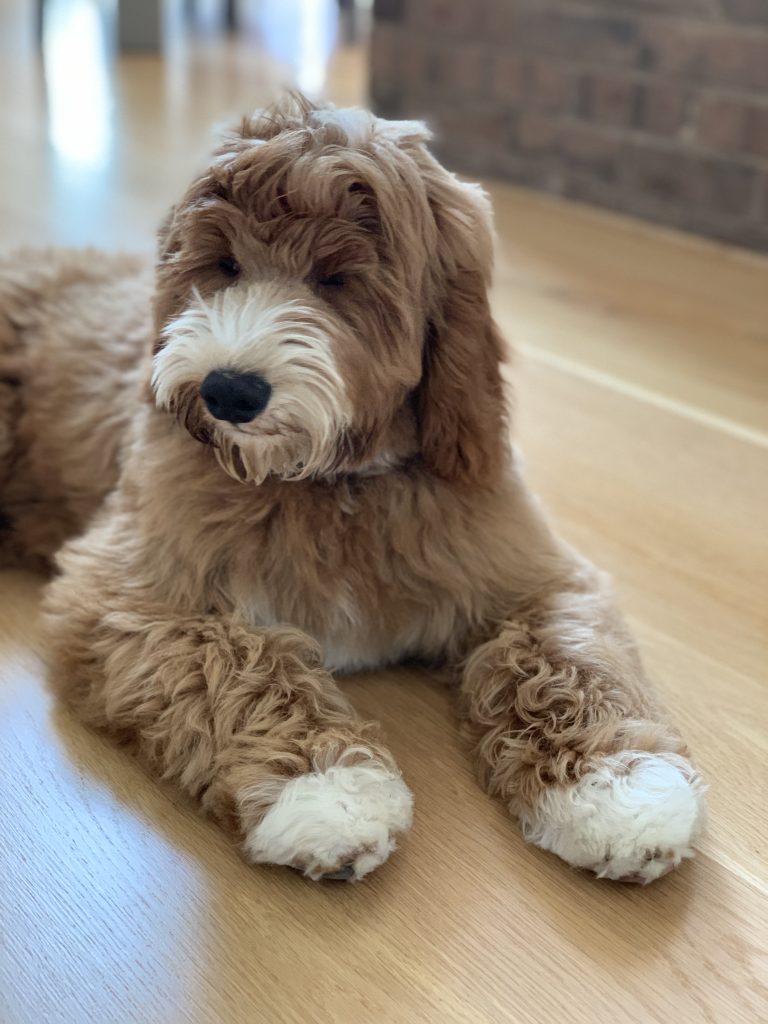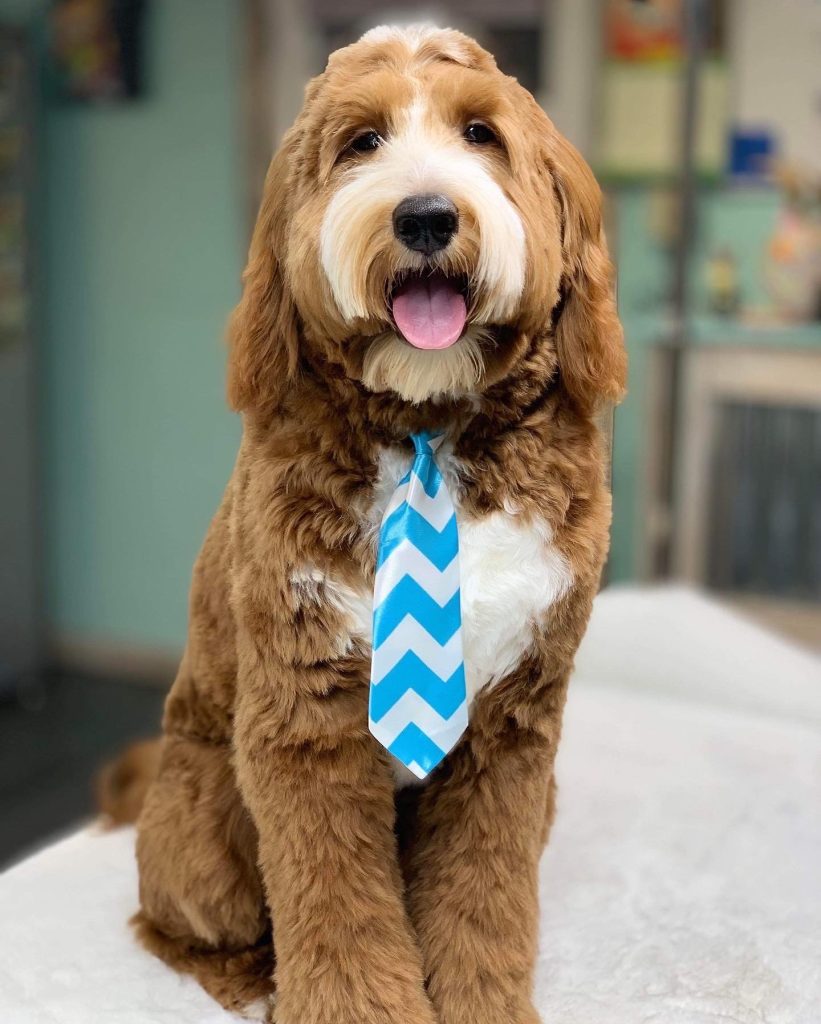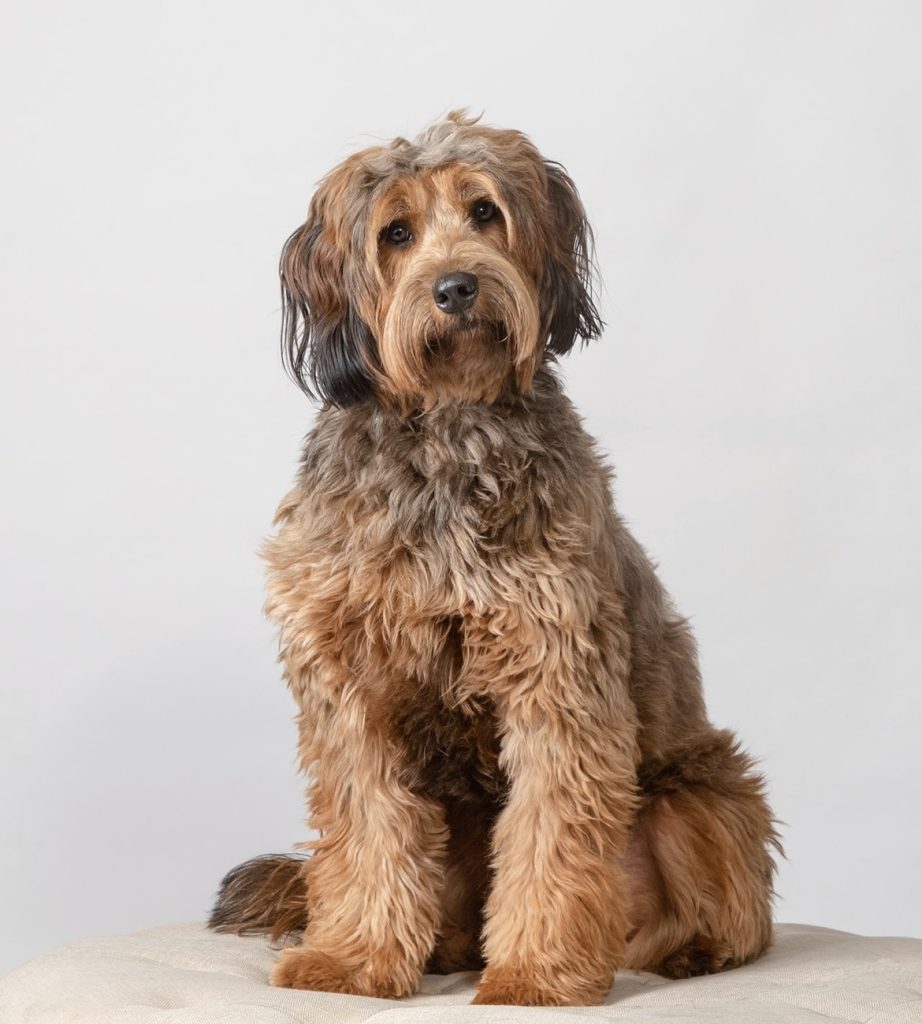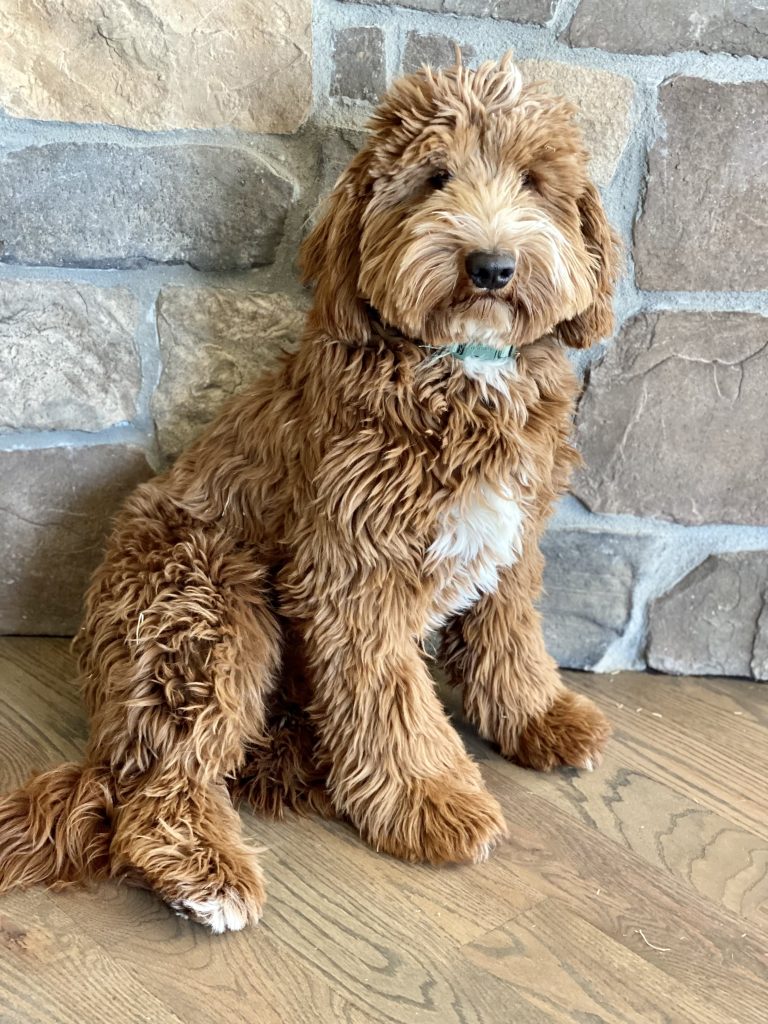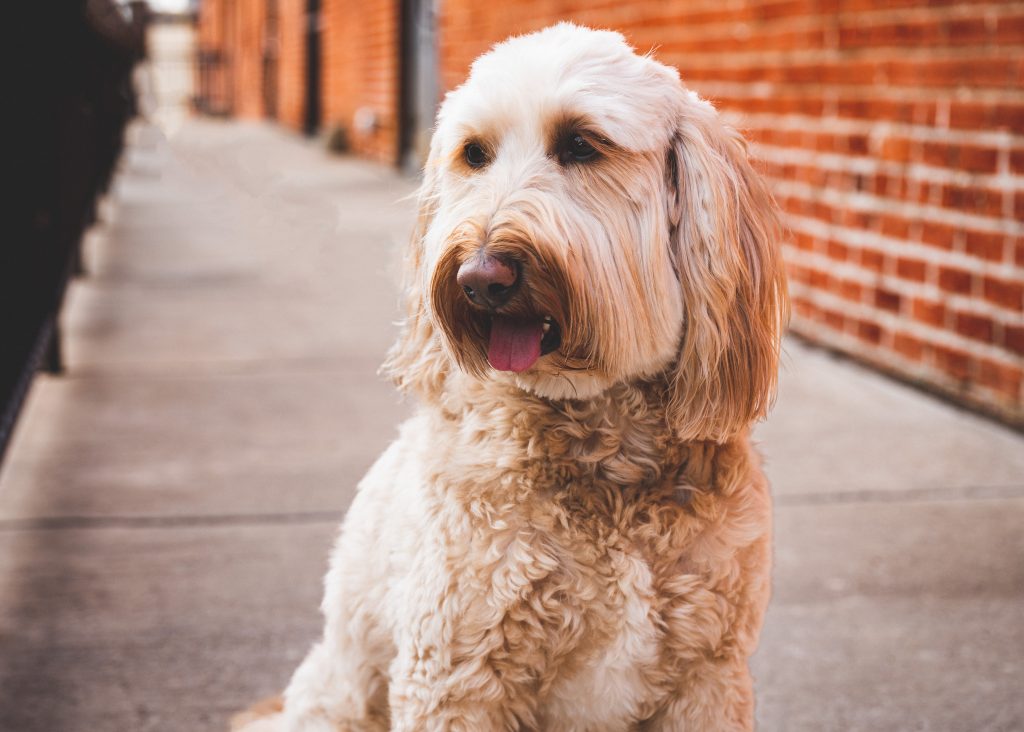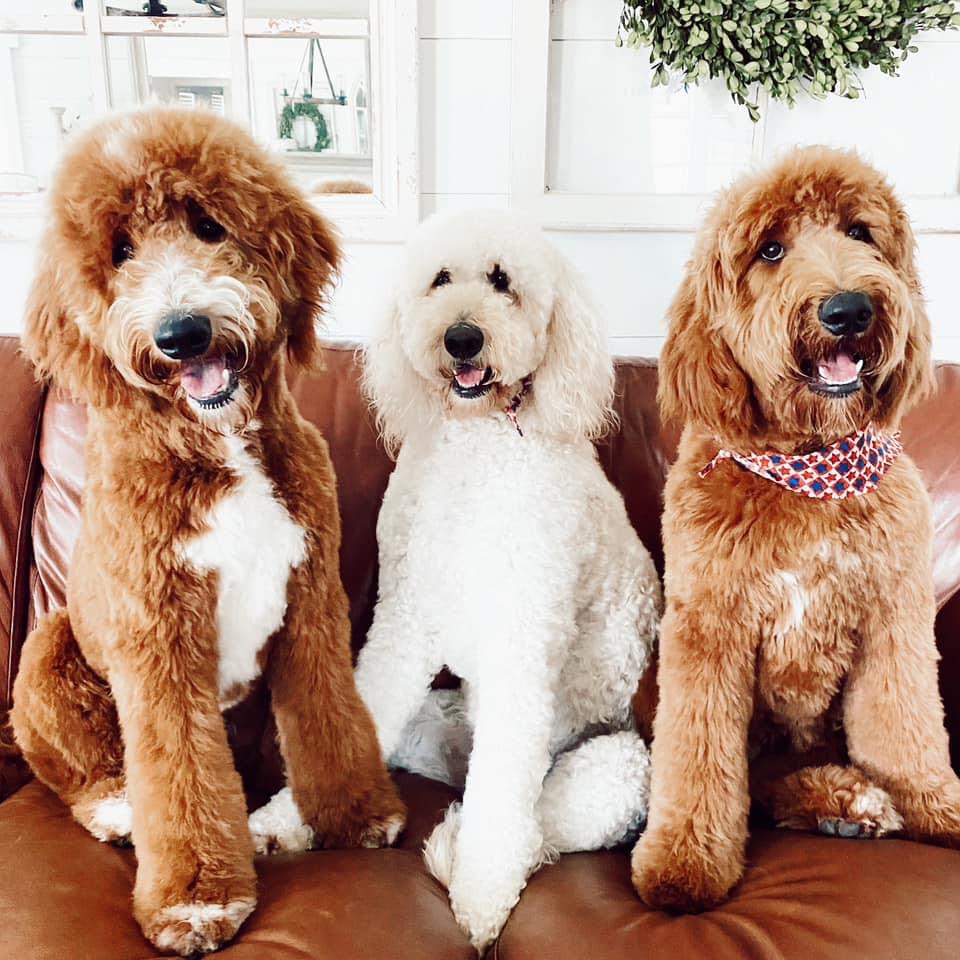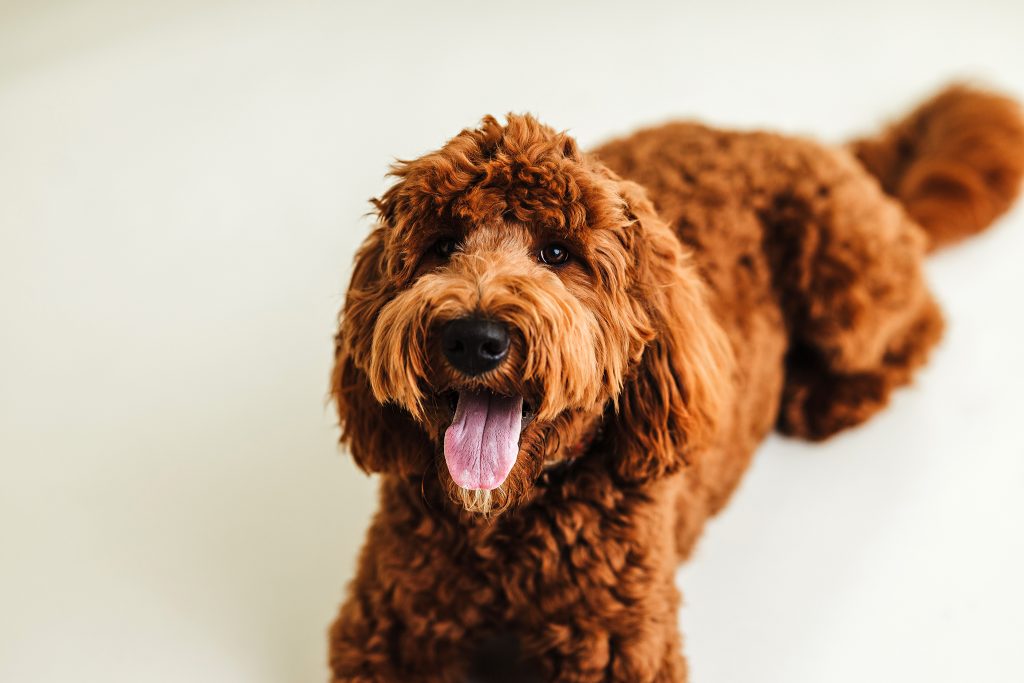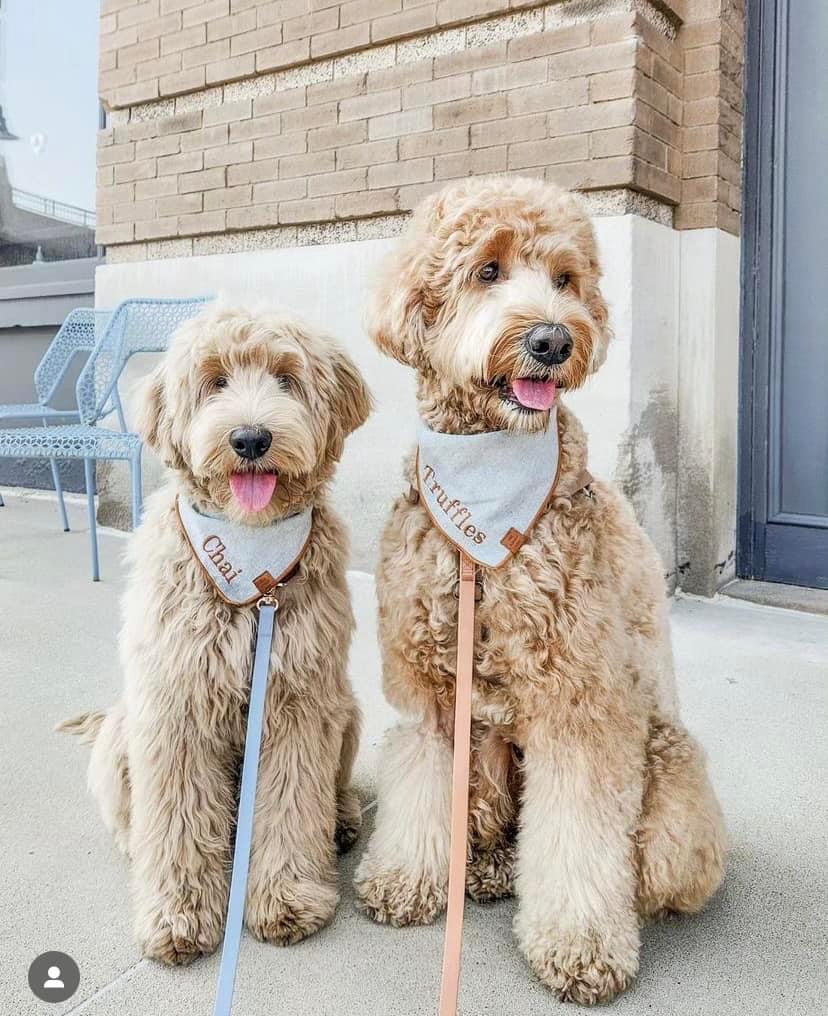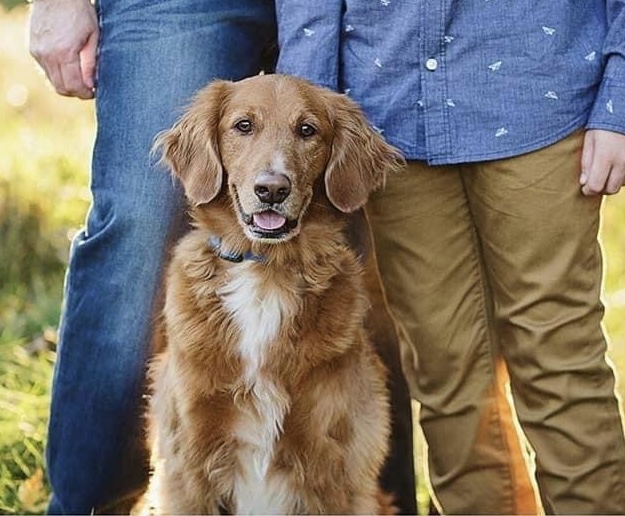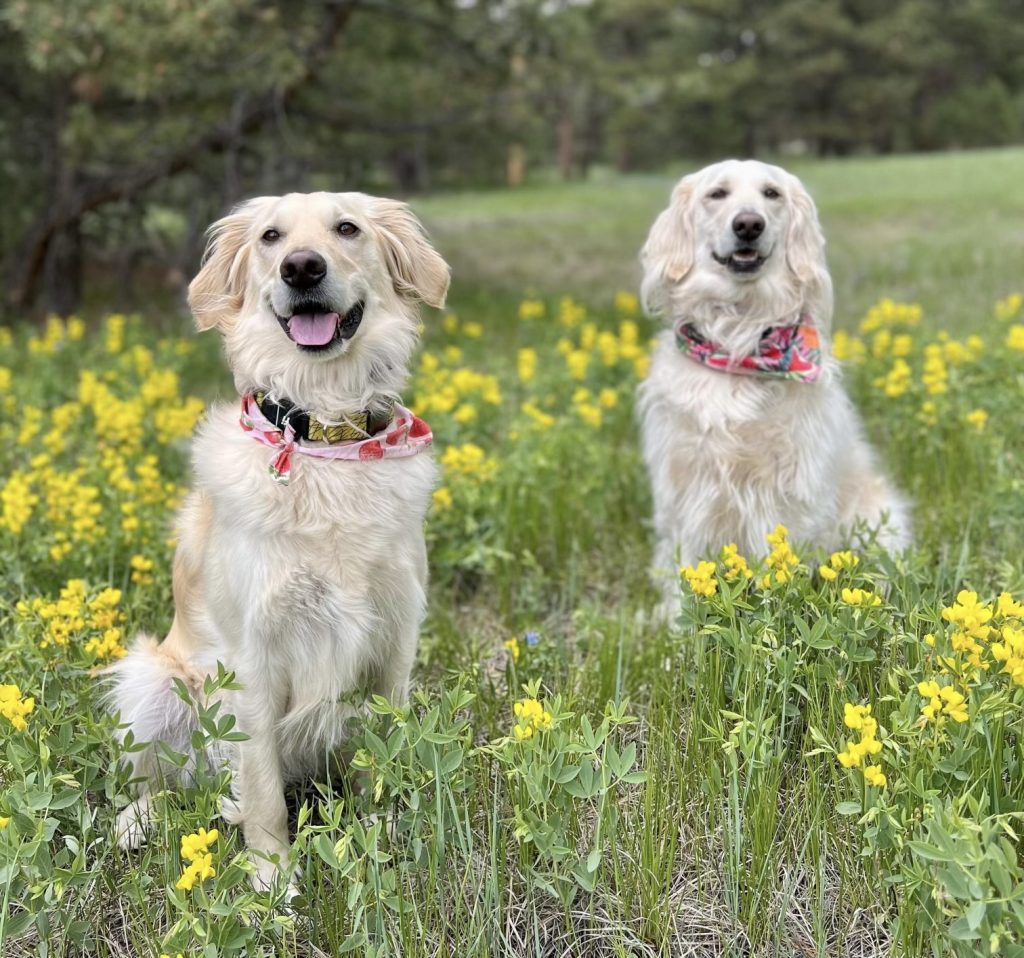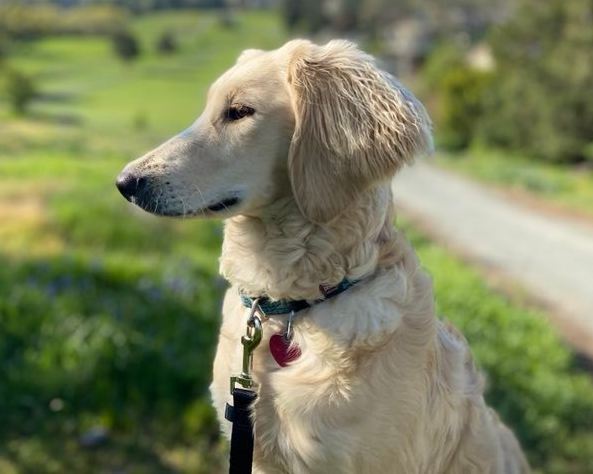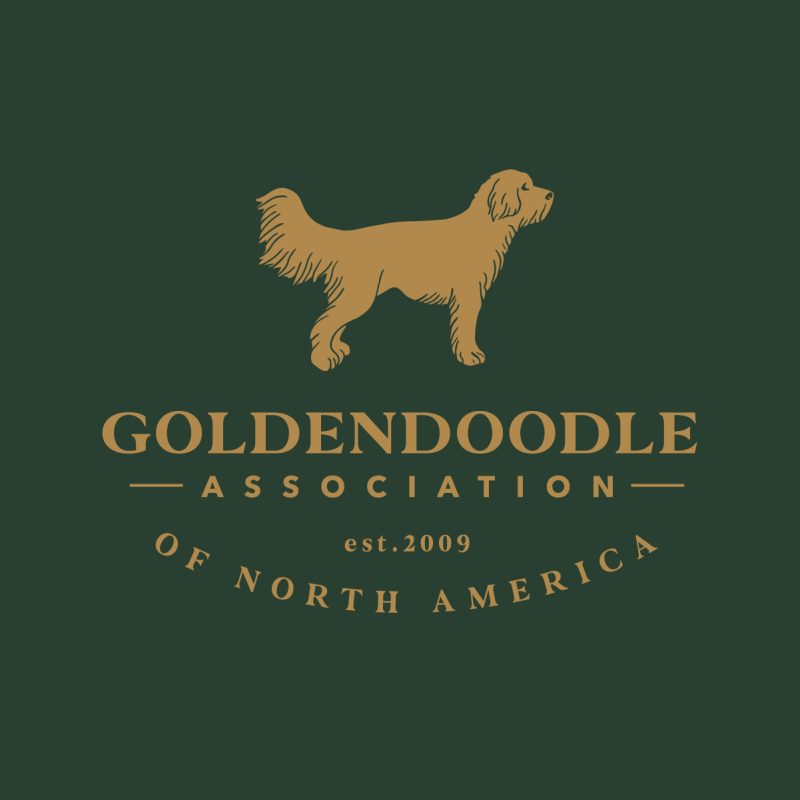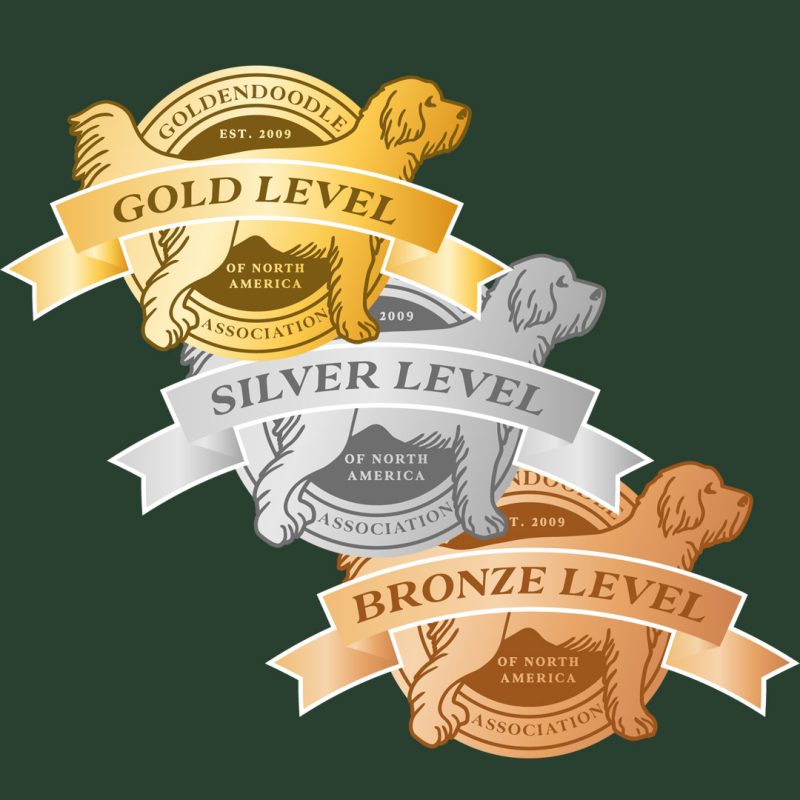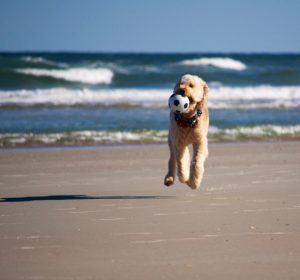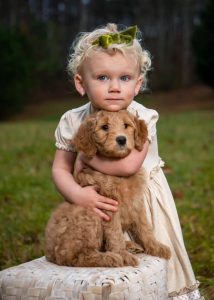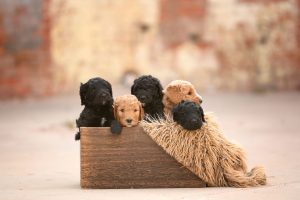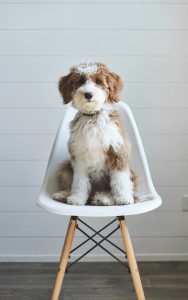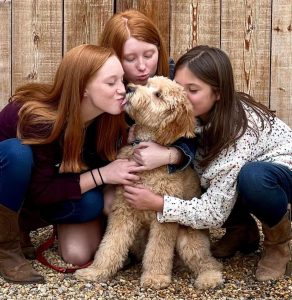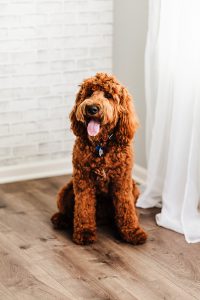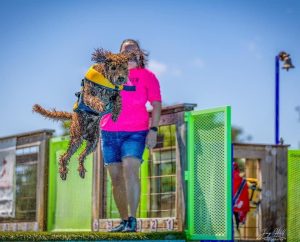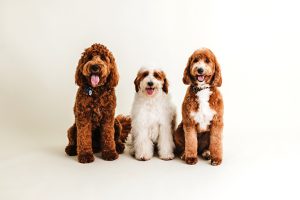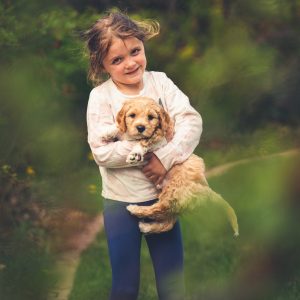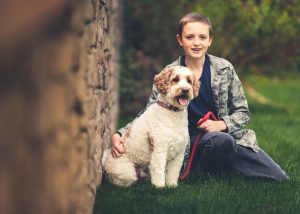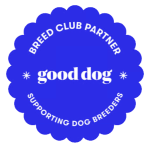Goldendoodles come in a variety of colors. While Golden Retrievers only come in shades of blonde/cream, golden/apricot, and red, they carry other color genes. These genes allow us to enjoy Goldendoodles in the full spectrum of colors brought in by the Poodle heritage, which includes black, chocolate (dark brown), silver, and gray coloring as well as patterns such as abstract, phantom, and parti.
Colors and Patterns
Red
Golden/Apricot
Blonde/Cream
Chocolate
Black
Abstract/Mismarks
Abstract is a solid color base with patterns of white on the blaze, paws, and chest. The amount of white in an abstract is less than 50 percent and placement of the white can vary.
Parti
A parti Goldendoodle is at least 50% white with solid patches of any other color.
Phantom
The Phantom coat pattern is a specific pattern of cream, golden, or red markings on a solid background of black or brown. Markings are above each eye, on the sides of the muzzle, chest, inside of legs, and under the tail.
Merle
Merle is a varied coat pattern for dogs with chocolate or black coats. While a beautiful color, the merle gene can cause blindness and deafness if two parents carrying the merle gene are bred together. Therefore, merle should only be bred by very knowledgable breeders who test for the merle gene and understand the genetics involved.
Coat Texture and Traits
The primary concerns for any dog breeder must be health, temperament, and conformation, but who can deny that the outward appearance of a Goldendoodle pulls at our heartstrings! With careful selection, breeders can now produce litters with predictable coat types and shedding propensities.
In addition to their adorable ragamuffin look, many people find the low shedding and allergy friendly qualities of the coat of Goldendoodles very attractive. DNA research can provide us with information regarding how coat genes affect the “look” of a Goldendoodle. Selecting for genetic traits is a much more reliable indicator for appearance and shedding intensity rather than using a specific generation for breeding.
Length (FGF5 gene)
The gene for coat length determines whether a dog has a long (L) or short (S) coat. Both Goldendoodle parent breeds are long-coated, therefore, all Goldendoodles carry two genes for long coat (L/L). The allele for short coat is dominant. If a dog carries 1 allele for the short gene (S/L) their coat would be short. This is why some of the early generations of Labradoodles have short coats whereas Goldendoodles do not.
Curl (KRT71 gene)
Goldendoodles can have curly, wavy, or straight hair texture.
A Goldendoodle’s coat can have various amounts of curl. They inherit the curl alleles from their parents. Typically, a Goldendoodle that is curly is +/+ for curl gene, +/- is a wavy or loose curl coat, and -/- is a straight coat. Since a wavy coated Goldendoodle can carry a curl gene (+/-), two wavy Goldendoodles bred together can produce all three coat types: curly, wavy, and straight. If a breeder tests the parent dogs for the curl gene, they can better predict the appearance of their puppies.
Curly Coat
Wavy Coat
Straight Coat
Shedding and Furnishings
What are Furnishings and Flat coat (gene RSP02)?
Furnishings are arguably one of the first things you’ll notice about a dog that helps you identify it as a quintessential “doodle.” Furnishings are longer facial hair including eyebrows, mustache, and beard found on most Goldendoodles. Golden Retrievers have an “open face” that has short facial hair, sometimes also known as a flat coat.
Genetic technology has taught us that furnishings are what confer the low- to non-shedding coats on our Goldendoodles that help make them such optimal family dogs.1,2 It was once believed that the curl gene and a gene aptly named the “shedding” gene were also important, but more recent findings tell us that neither is relevant to the likelihood of furnished dogs shedding. In fact, the Shedding gene is only relevant for unfurnished dogs (short facial hair), and has no impact on shedding for furnished Goldendoodles.
Commercially available genetic testing allow us to determine the alleles of our parent dogs for each of these genes so we can better predict coat type in puppies. This is much more accurate and dependable than using filial generations for labeling. We strongly recommend that if low shedding or the furnished “look” is important to you, that you find a breeder who performs genetic testing and doesn’t leave the presence of this gene to the vagaries of guessing.
The common abbreviation for the furnishing gene is an “F” and for a flat coat (no furnishings gene) the abbreviation is often either “IC” (incorrect coat) or “f.” There are three possibilities for this gene: FF, Ff (or F/IC), or ff (or IC/IC).
The gene responsible for furnishings is dominant. By testing the parent dogs DNA, it can be determined if a breeding pair will produce puppies that all have furnishings, or if there will be some puppies with a flat or incorrect coat, like a Golden Retriever. Dogs with one copy of the furnishings gene (Ff or F IC) are lower shedding than dogs without furnishings. Dogs with two copies of furnishing genes (FF) are typically non-shedding.
Although most owners prefer Goldendoodles with furnishings, some really enjoy a goldendoodle with a flat coat. These dogs tend to shed less than a purebred Golden Retriever and require less coat maintenance. If you have a family with allergies, a Goldendoodle with a flat coat is not the best match for you.
Genetic testing of the parent dogs of Multigenerational (“multigen”) Goldendoodles can ensure breeders will not unintentionally produce puppies with flat coats (without furnishings).
A Goldendoodle with two furnishings alleles cannot guarantee that you will not be allergic to a particular dog. Allergies are very complex and shedding is just one of the components that factor into the equation. Consider that dander, saliva, proteins, and allergens carried on the dogs coat can all contribute to each individual’s allergic reaction. For more information on allergies and the hypoallergenic dog, please see Why Own a Goldendoodle?
Furnished Goldendoodles
Unfurnished or Flat-coated Goldendoodles
The Goldendoodles below lack “furnishings” and will shed more than a Goldendoodle with furnishings.
Thoughtful selection of breeding mates is necessary to produce the ideal Goldendoodle. GANA supports its member breeders by providing access to the latest scientific research and guidance from experts in fields such as breed development, canine reproduction, and puppy development. GANA’s goal is to guide the development of the Goldendoodle breed in the best possible way using current science and technology to enhance health, raise puppies with the best possible temperaments, and continue to promote genetic diversity to improve the breed.
Citations
- Parker HG, Chase K, Cadieu E, Lark KG, Ostrander EA. An insertion in the RSPO2 gene correlates with improper coat in the Portuguese water dog. J Hered. 2010;101(5):612-617. doi:10.1093/jhered/esq068
- Cadieu E, Neff MW, Quignon P, Walsh K, Chase K, Parker HG, VonHoldt BM, Rhue A, Boyko A, Byers A, Wong A, Mosher DS, Elkahloun AG, Spady TC, Andre C, Lark KG, Cargill M, Bustamante CD, Wayne RK, Ostrander EA. Coat variation in the domestic dog is governed by variants in three genes. Science. 2009 Oct; 326(5949):150-3


